Jason Francisco, Pont d'Iéna, as seen from the Trocadéro, 2025
Of all the bridges of Paris, the Pont d'Iéna is the one I like best. It is not the most elegant or the most gnomic—for the former, it's the Pont des Arts, and for the latter, the Pont Mirabeau—but on the Pont d'Iéna, the whole urban muscle flexes. The placement of the bridge explains a lot of it: the bridge forms the short but essential link between the Palais de Chaillot and the Eiffel Tower. More accurately, the bridge is the center of a set of urban vectors moving horizontally, vertically, and diagonally all at once, funneling energy in multiple directions: the fields of the Champ de Mars to the hill of the Trocadéro across the Seine, and back to the commanding heights of the great tower, which drops its summit down to the Iéna bridge just beneath it. It seems appropriate, to say it differently again, that the bridge connects the place where the United Nations General Assembly adopted the Universal Declaration of Human Rights in 1948, and the city's greatest icon of aspirational modernity, its iron tower of Babel. The name of the Pont d'Iéna betrays its origin in a very different affirmation, namely Napoleon's victory over the Prussians in 1806, a key moment for French imperial expansion in early nineteenth century Europe. And this is just to say that the bridge moves historical vectors as much as geospatial ones.
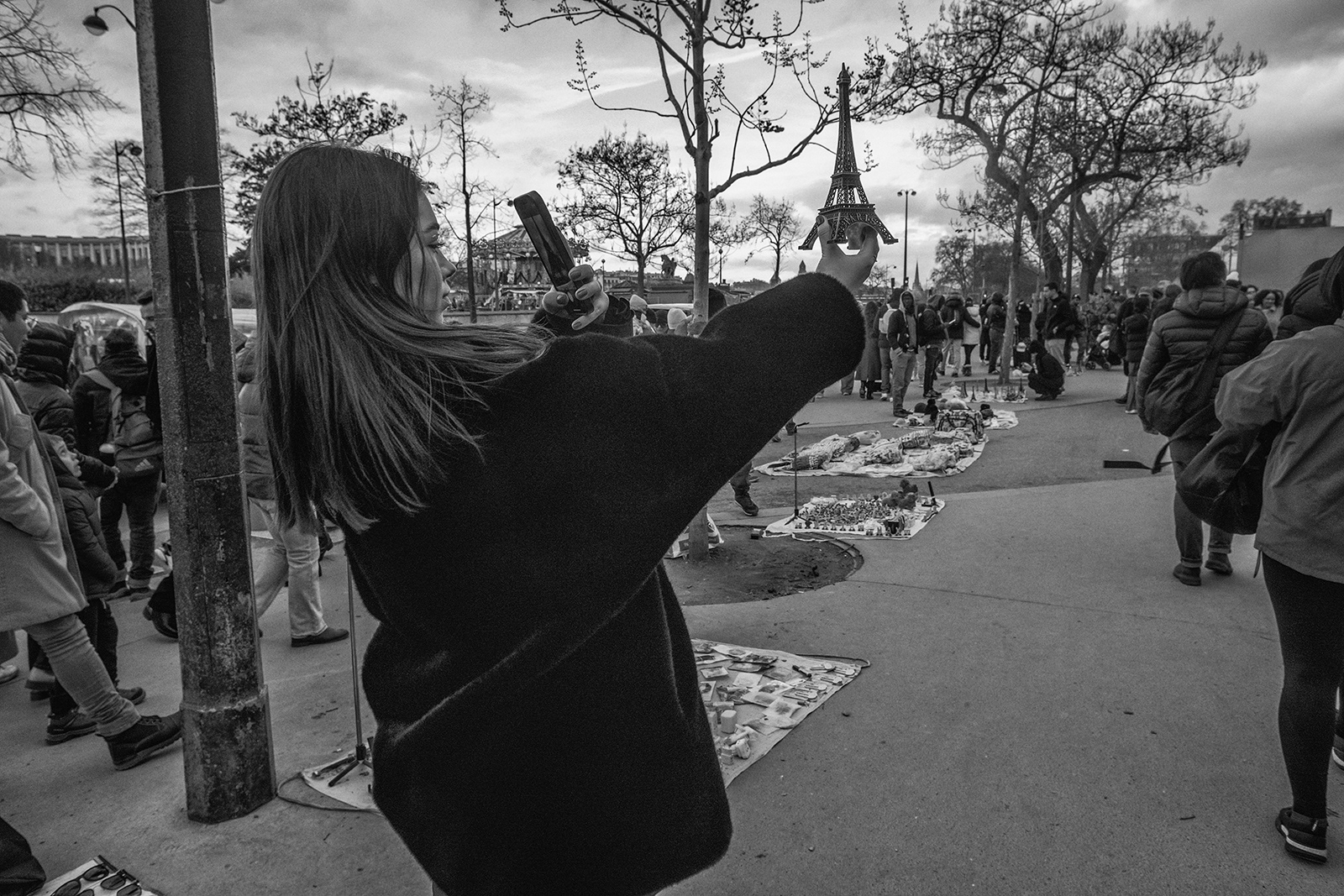
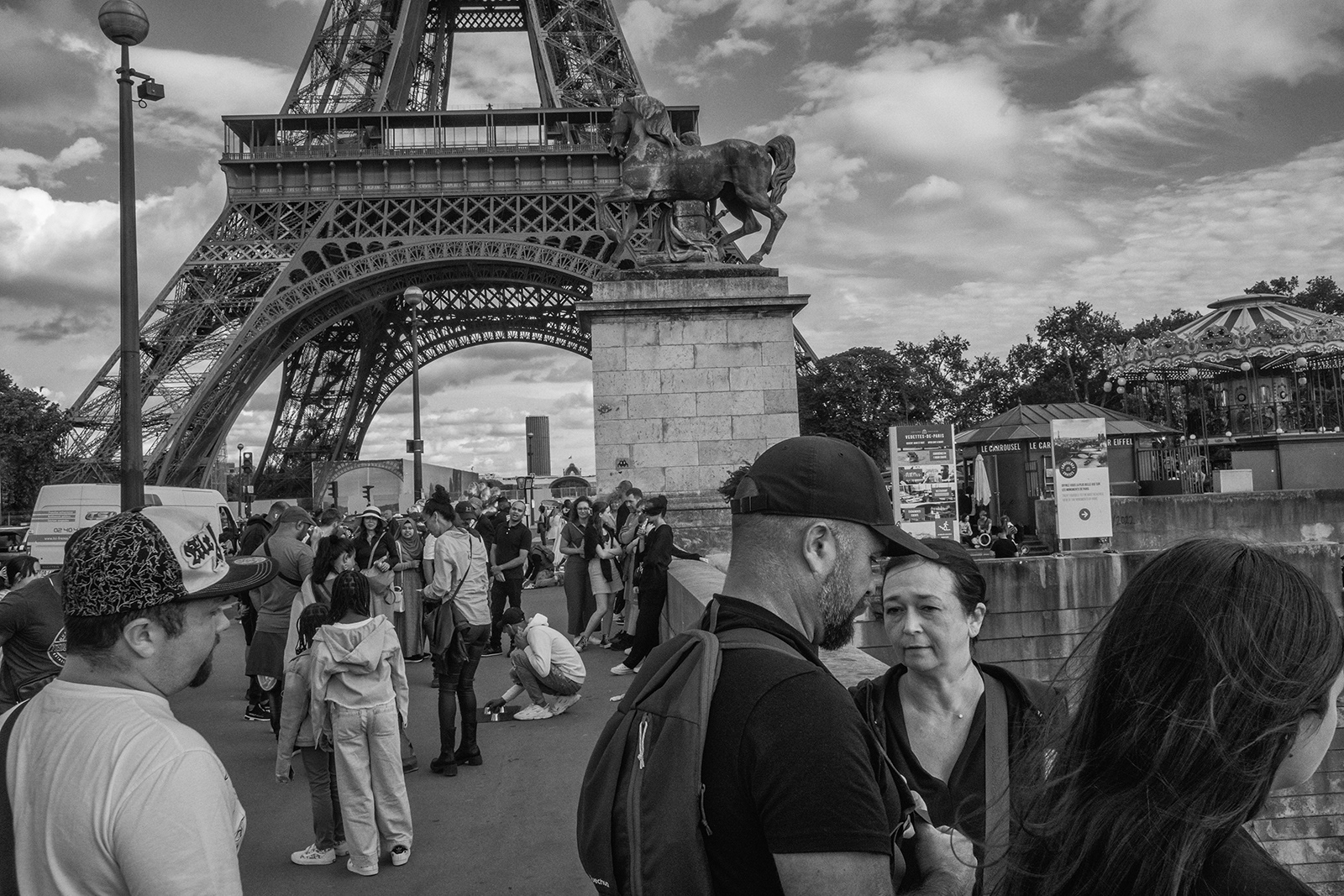
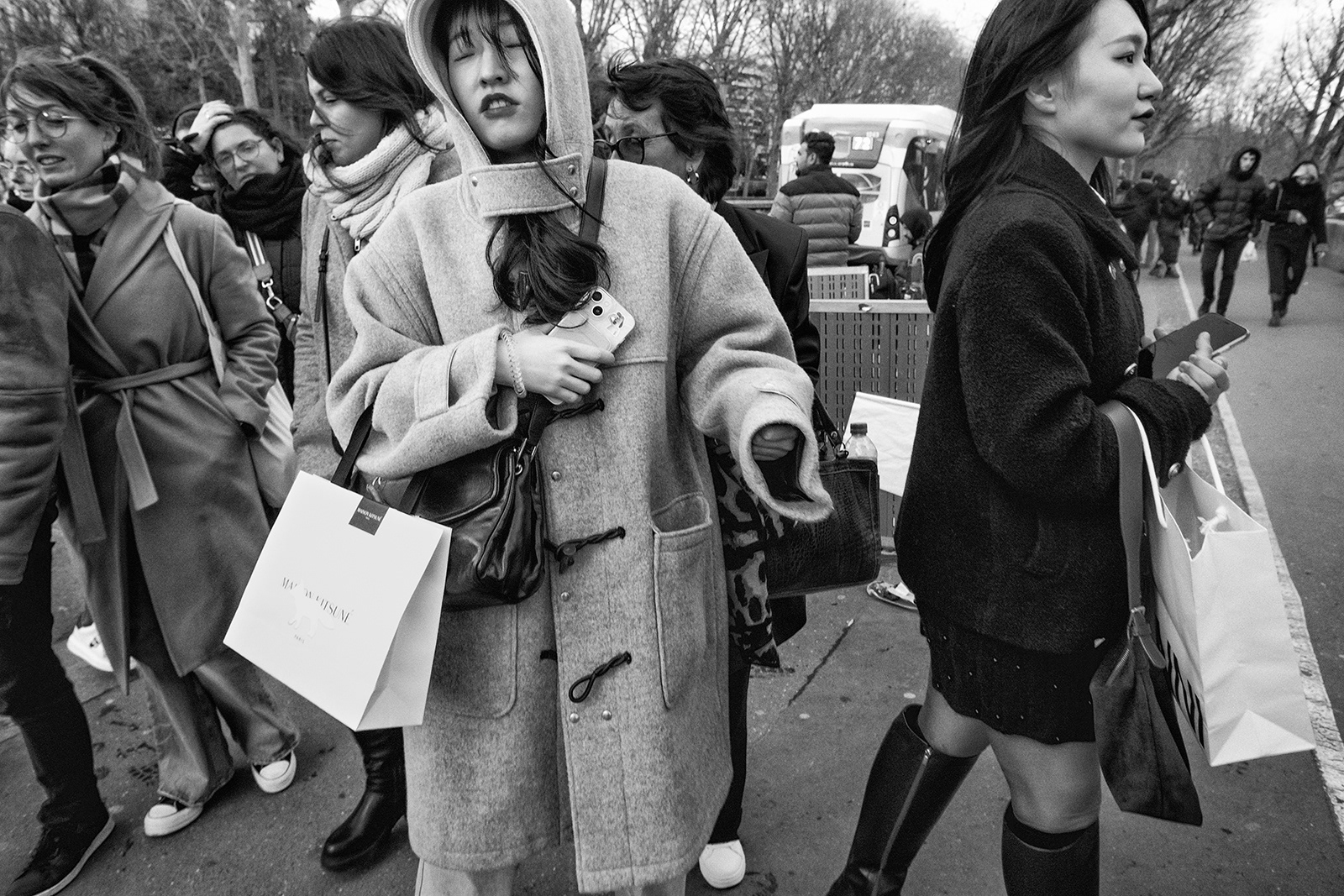
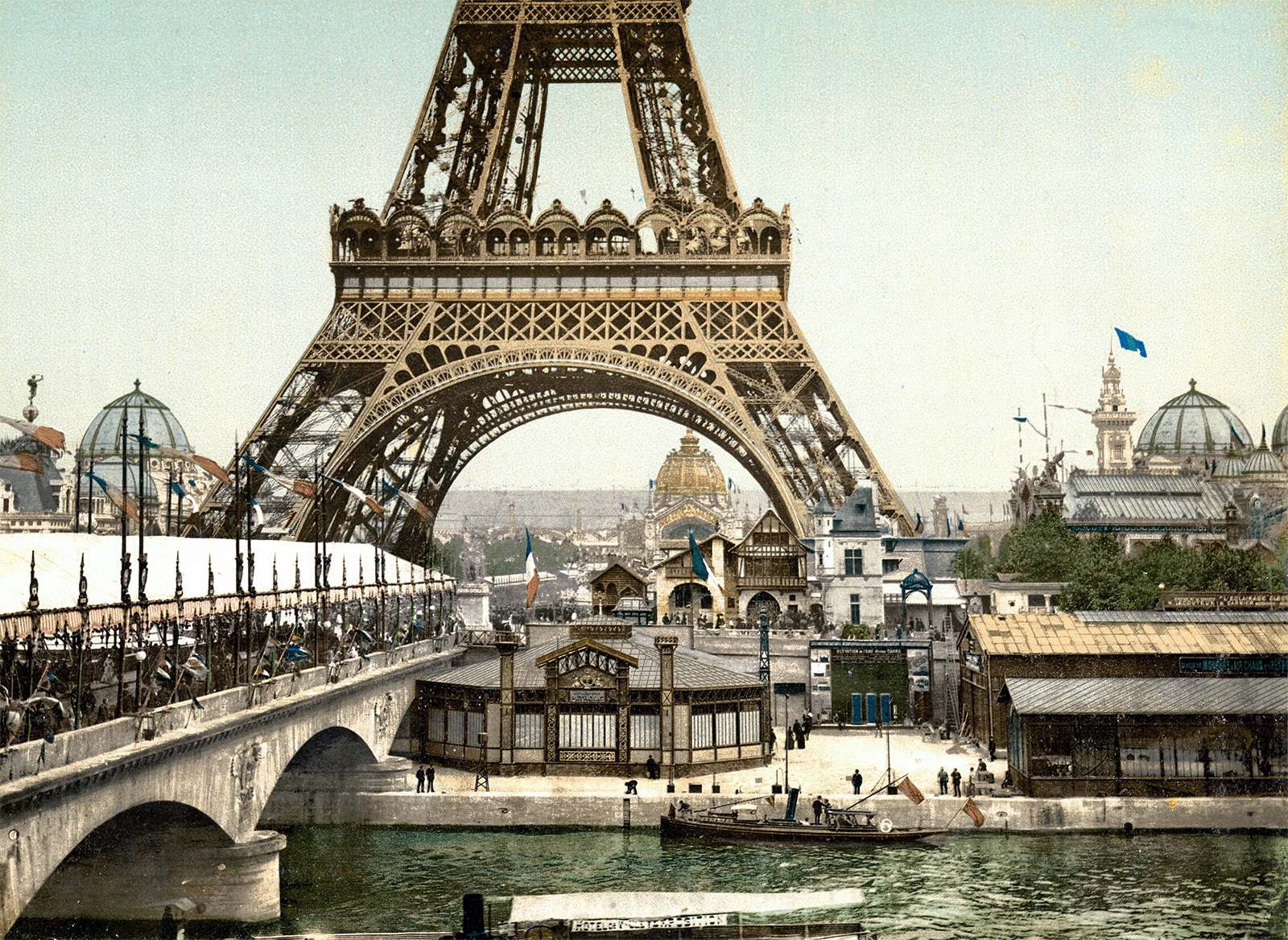
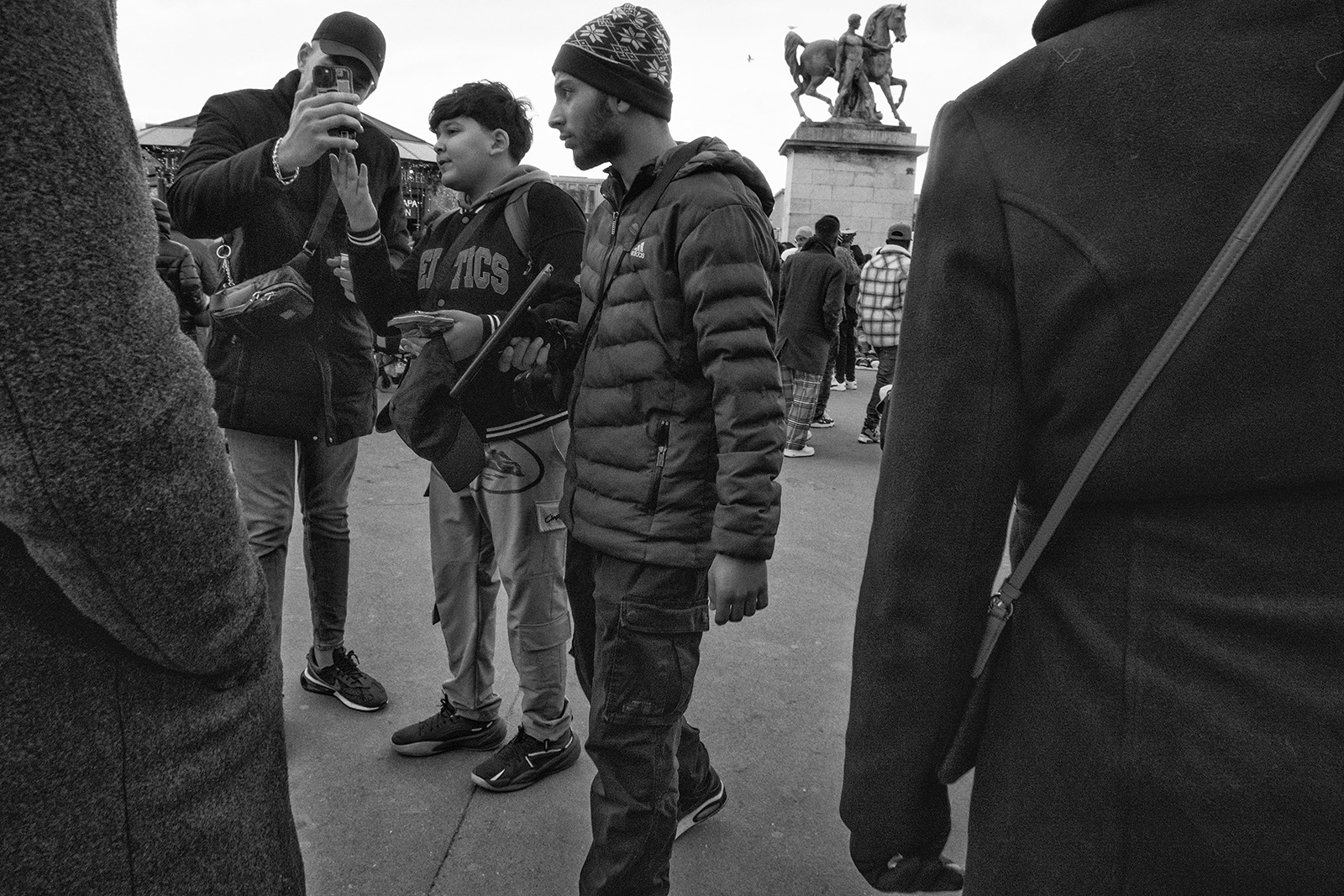
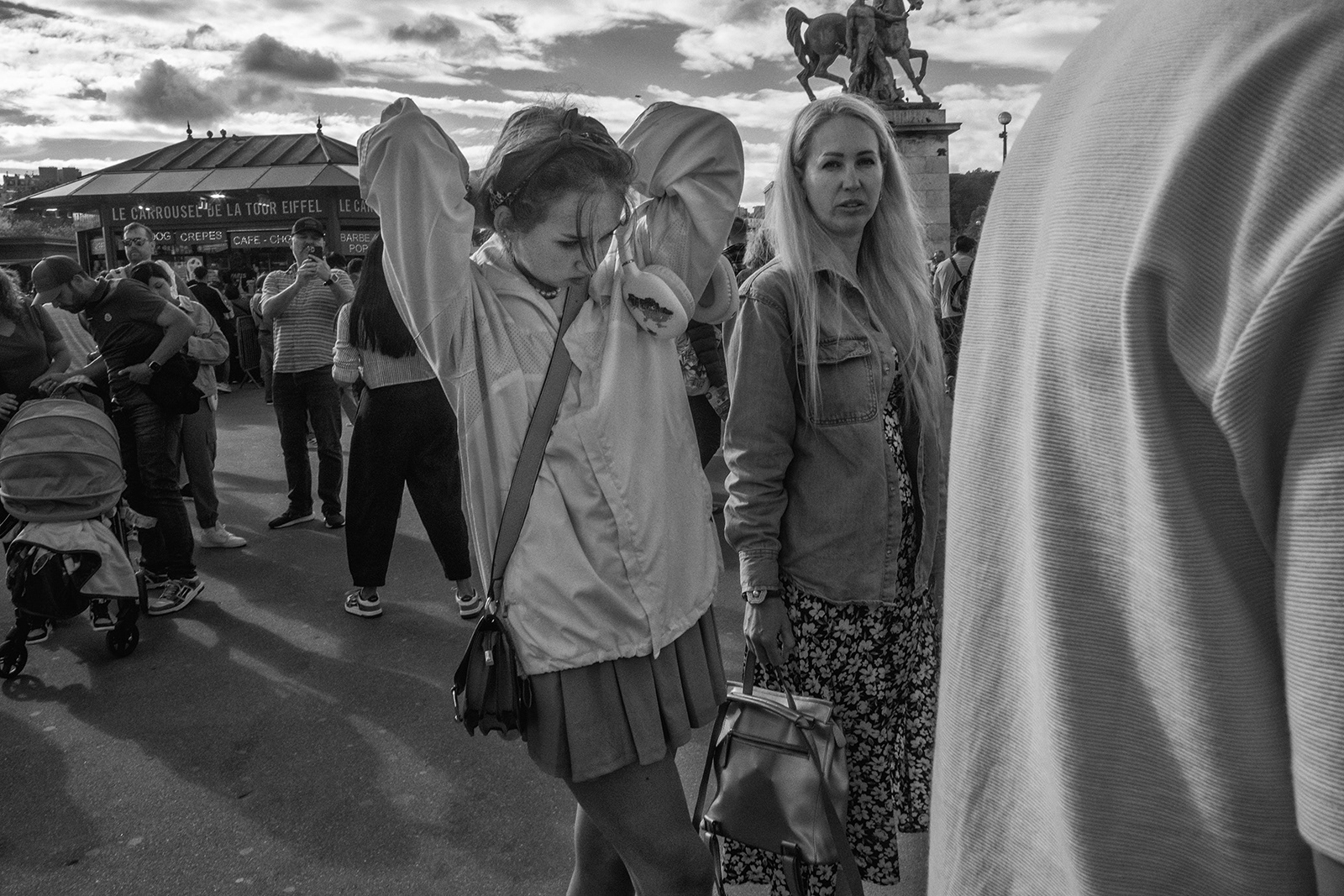
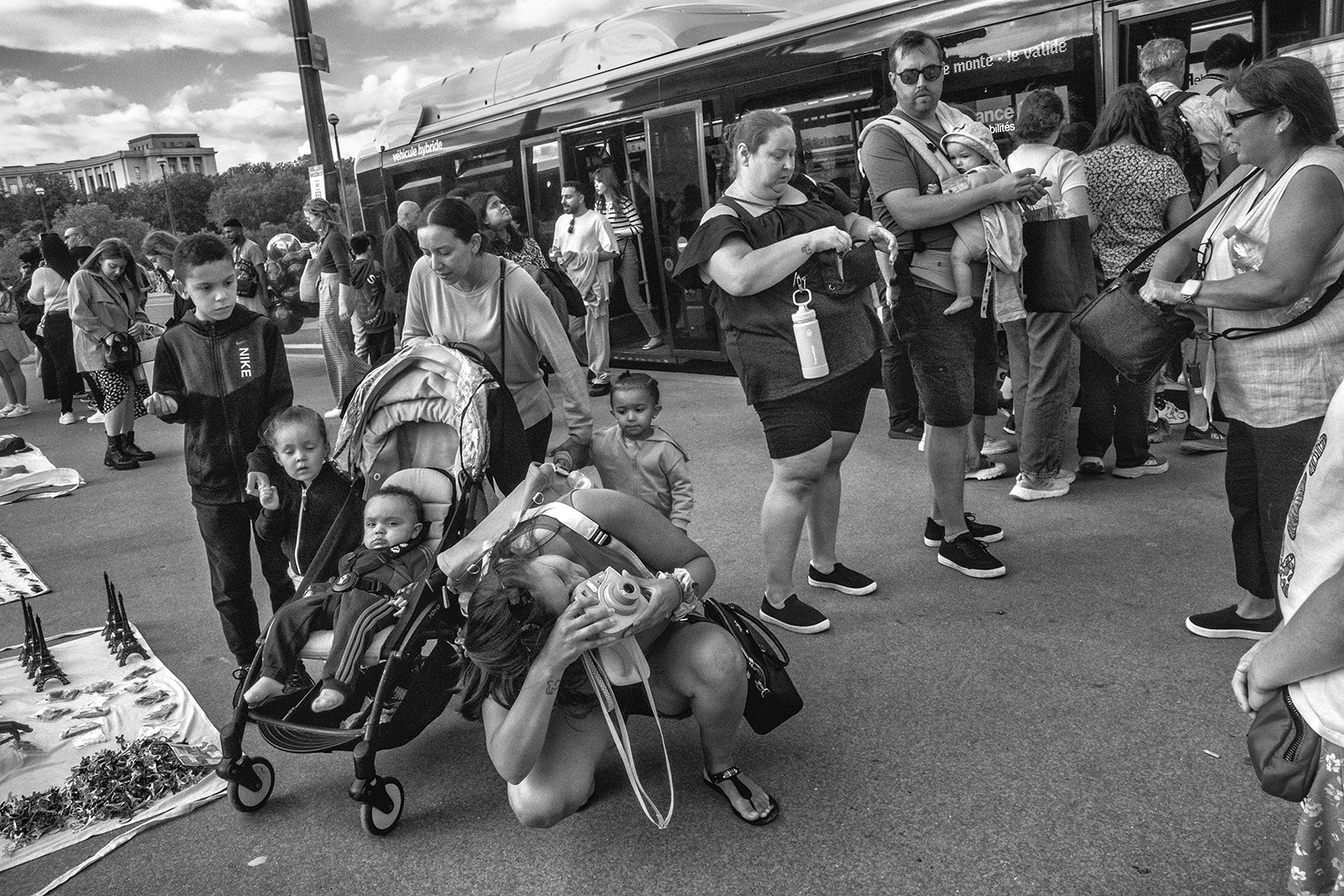
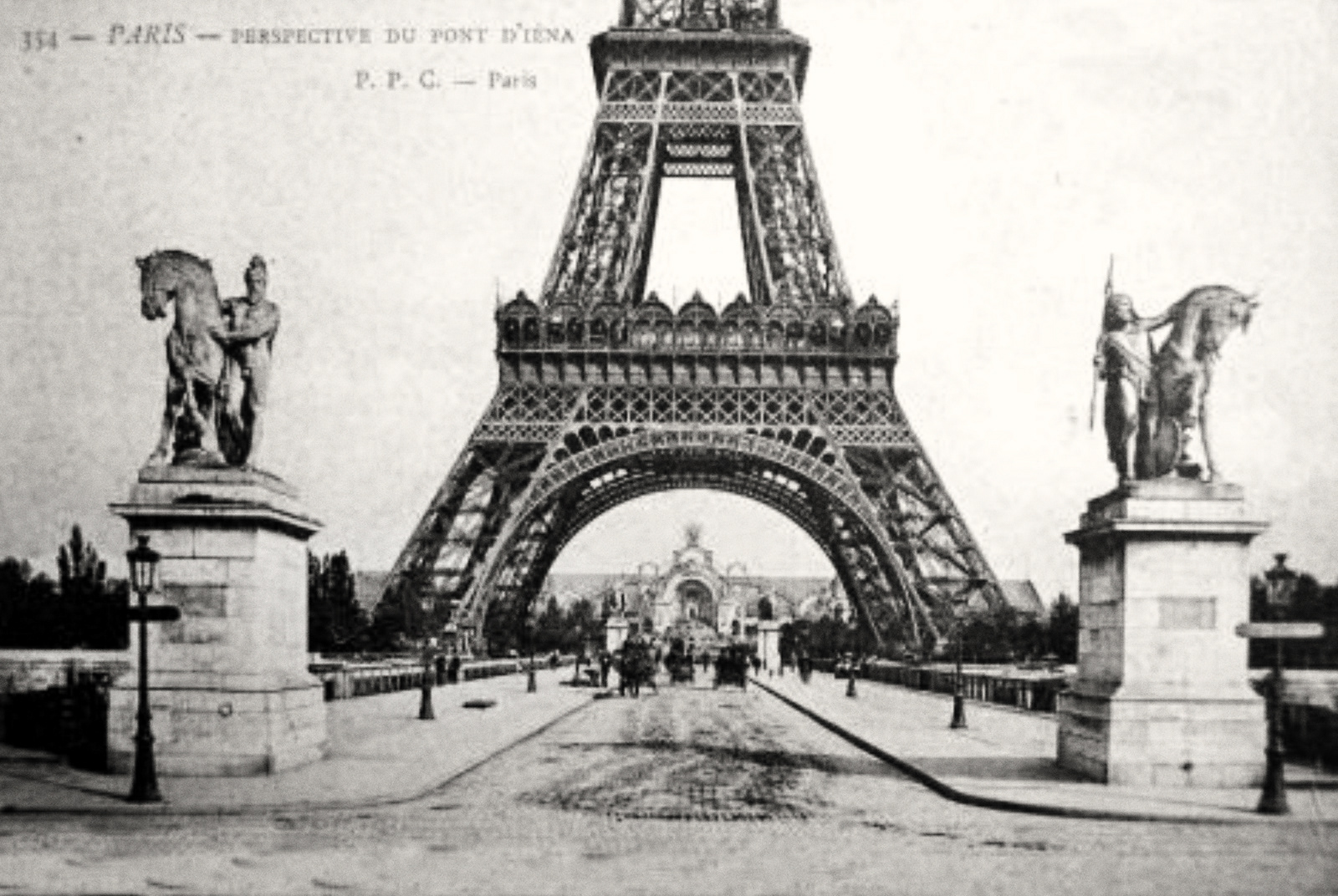
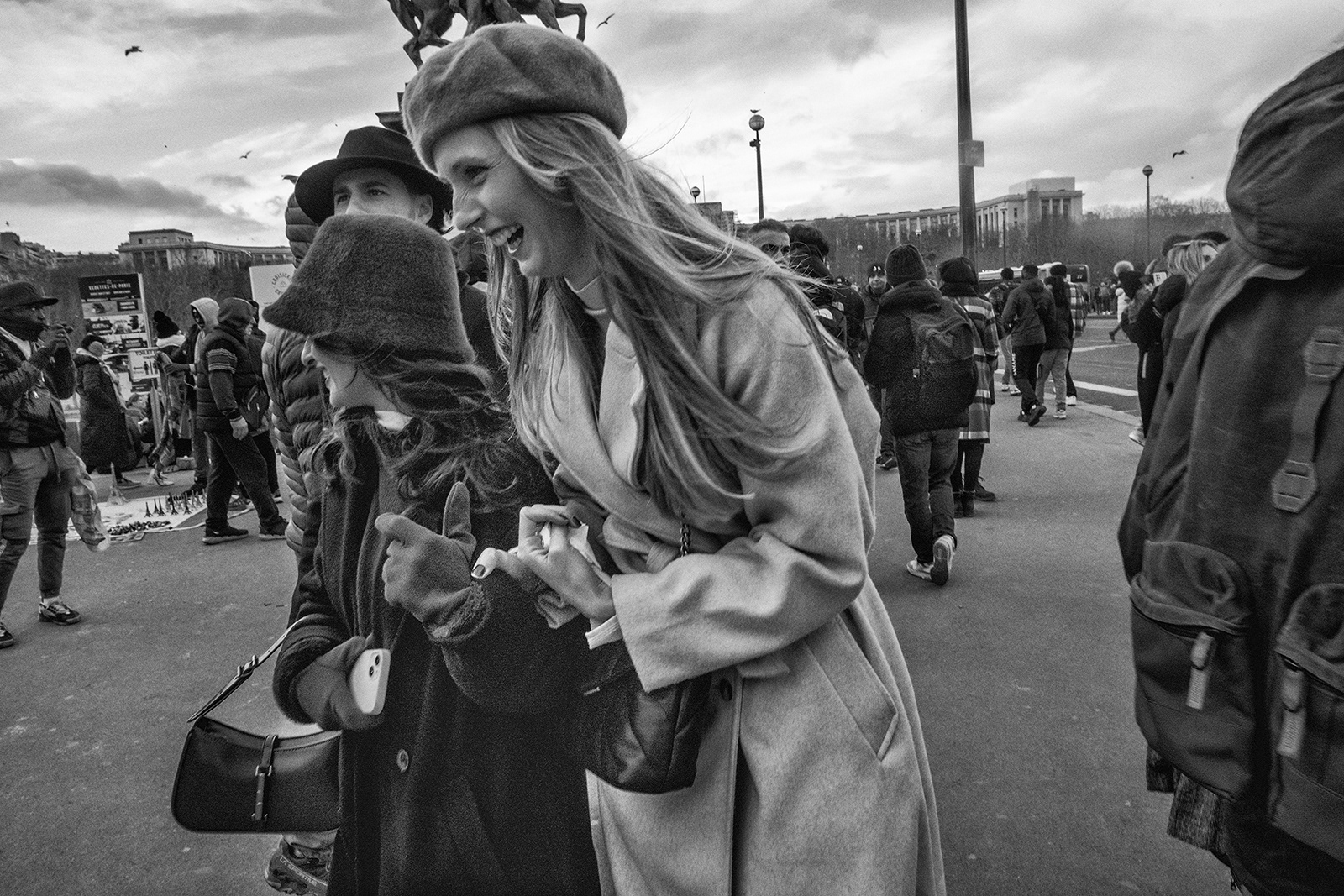
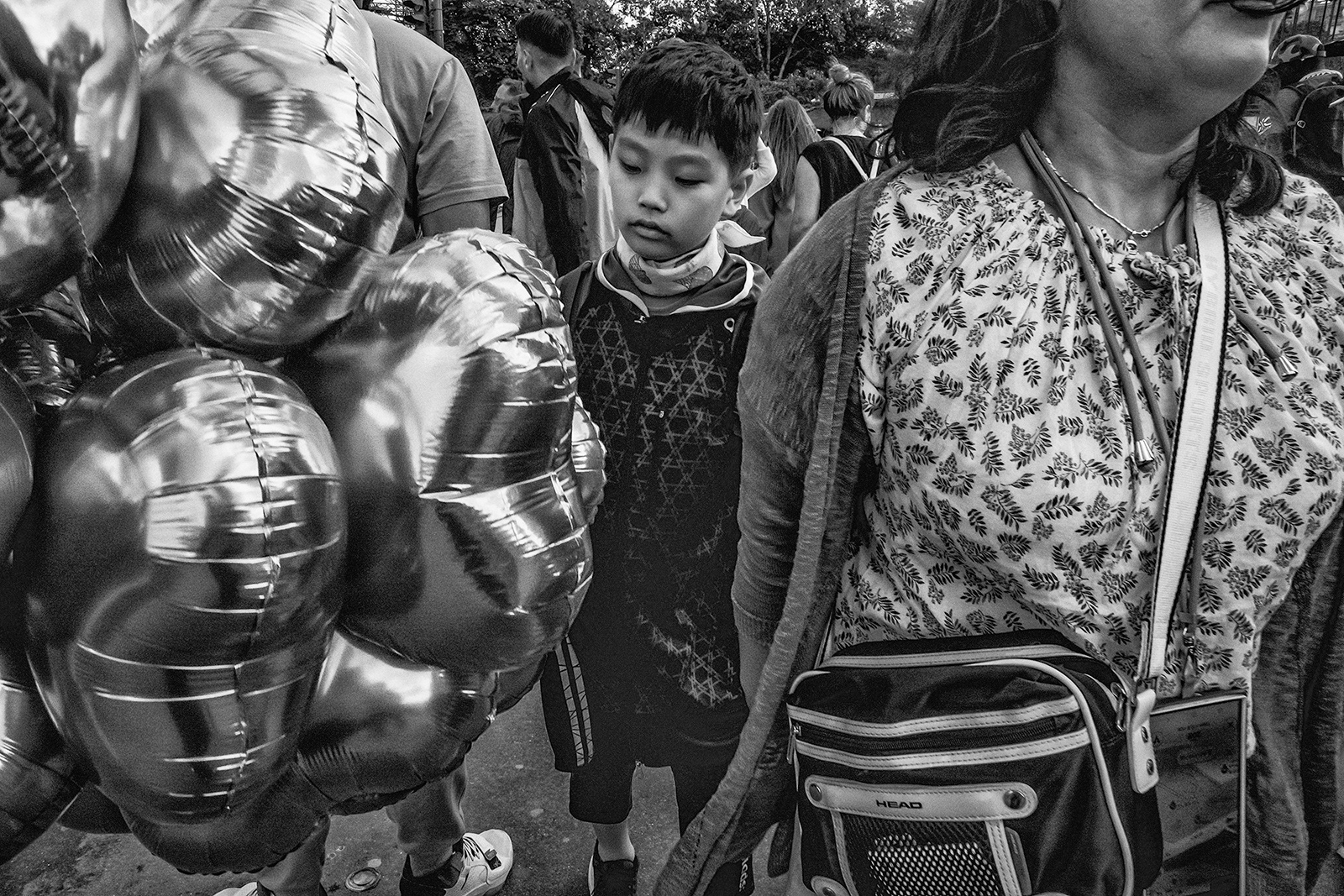
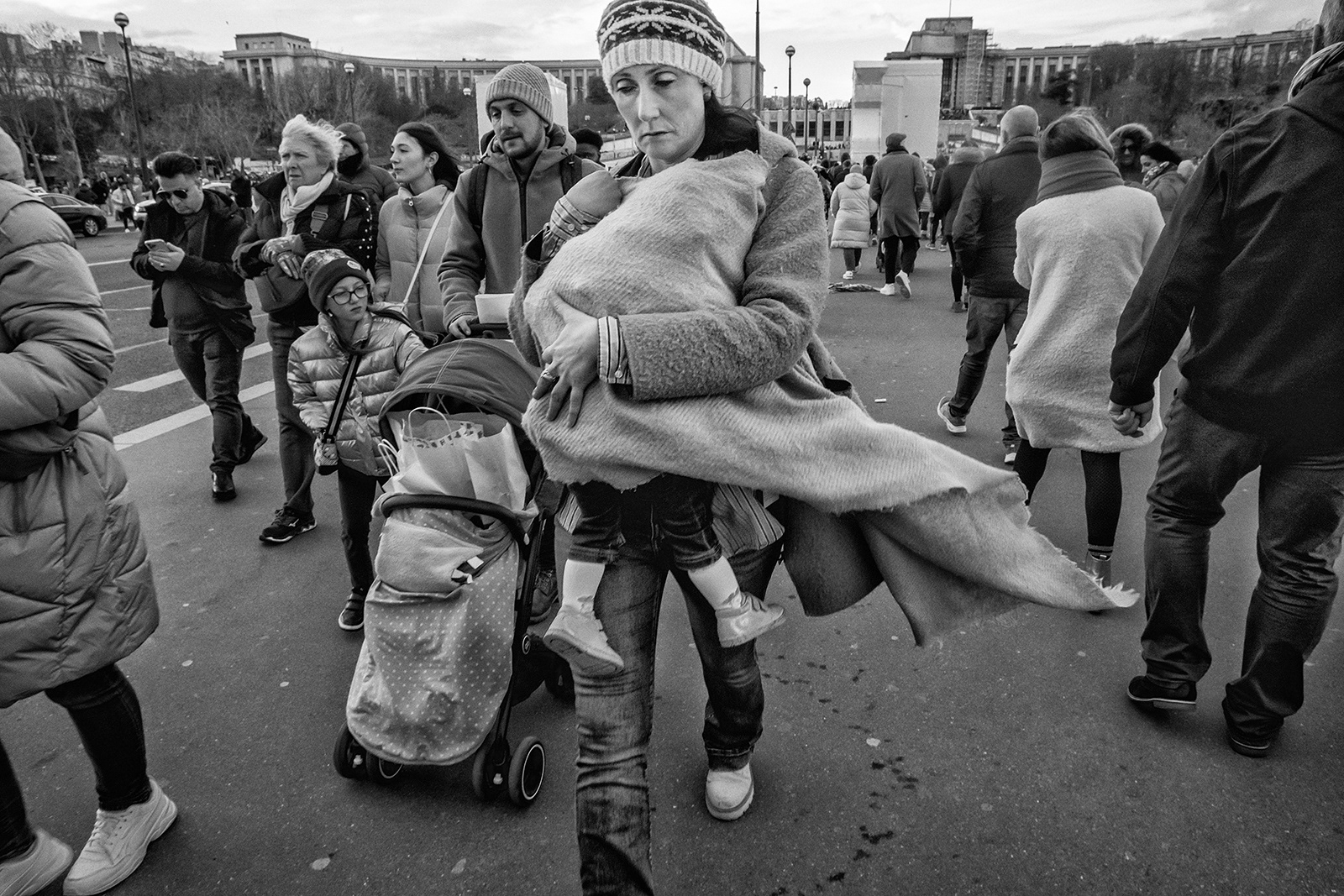
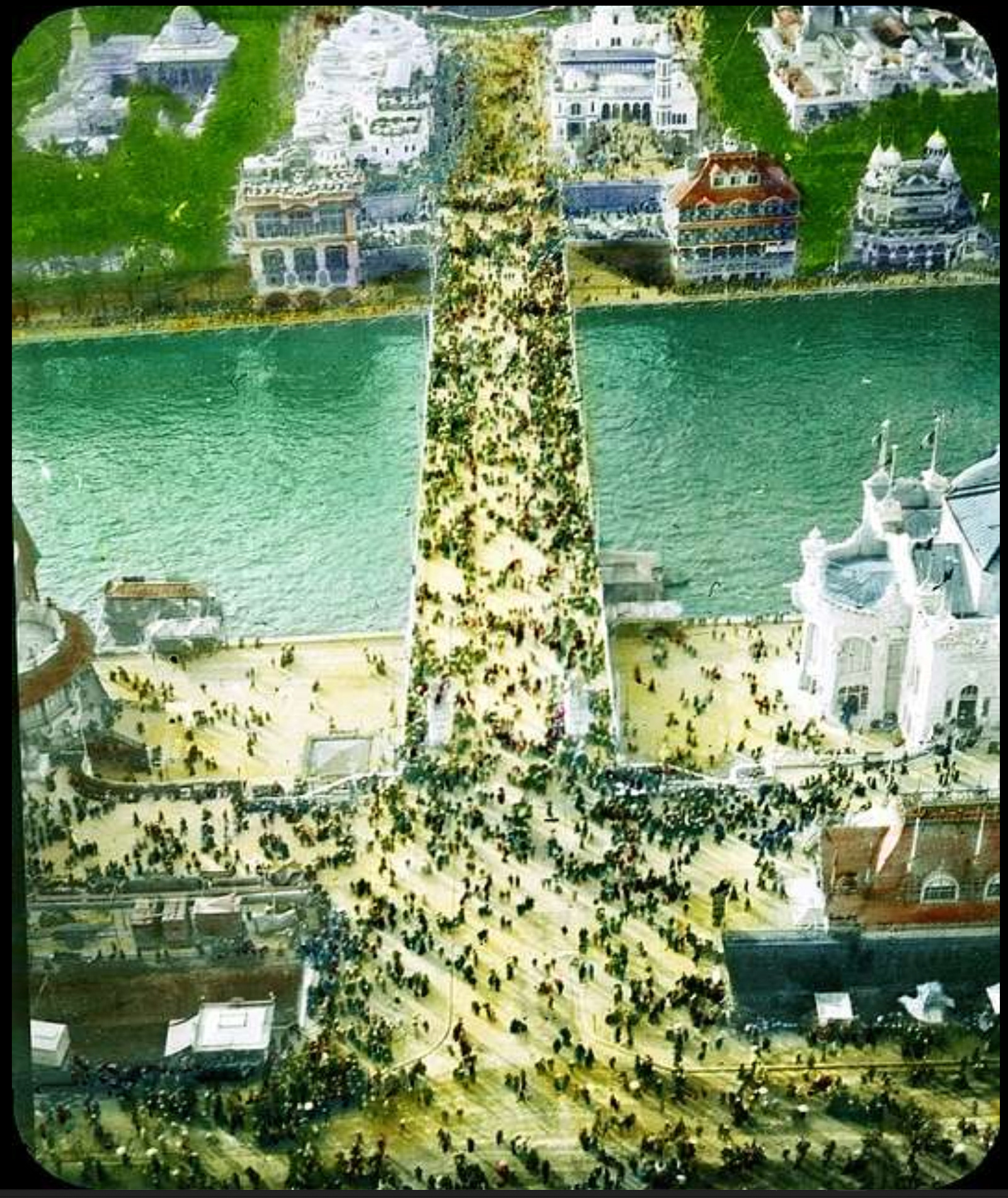
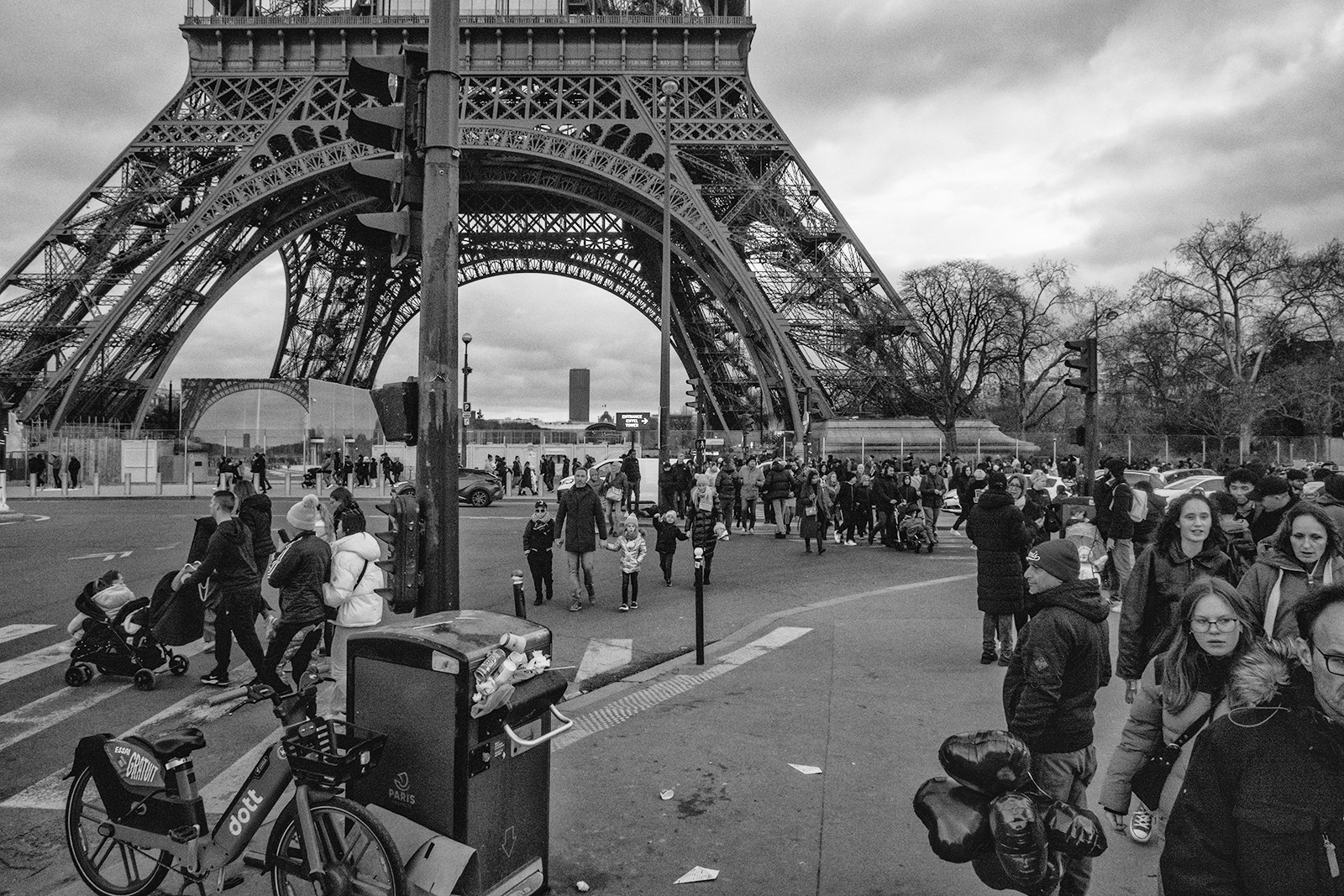
For me, the contemporary Pont d'Iéna summons an artistic concept associated with Georges Perec and Paul Virilio, "l'infra-ordinaire." "The infra-ordinary" for them is the opposite of the extraordinary—it is the everyday world as it escapes attention, the banal as it constitutes the elemental structure of life, even its essence. The Pont d'Iéna seems to me exactly this, the fulcrum of the collective urban ordinary. Where Perec set out to inventory infra-ordinary reality, for example in his short 1974 text An Attempt at Exhausting a Place in Paris—a jewel of a book, one of my favorites of his oeuvre—my inclination is the reverse. With a camera, I am interested in the infra-ordinary's ephemerality, its fragmentariness, its chaotic micro-sociality. It is one thing, after all, to practice photography in the idiom of analysis, another thing to practice it in the idiom of encounter, just as there is a difference between the ways photographs arrest appearances—bracketing time into instants—and the ways they release appearances across the flow of time's movements. And, too, there is the tension, apparent in most photographs, between the ways photographs receive things as they are, and the ways they manufacture the ways things appear to be, often in the name of naive reception. It seems, in other words, entirely appropriate for someone interested in how photography throws philosophical vectors about the nature of perception—to photograph at a vector-crossed site like the Pont d'Iéna.
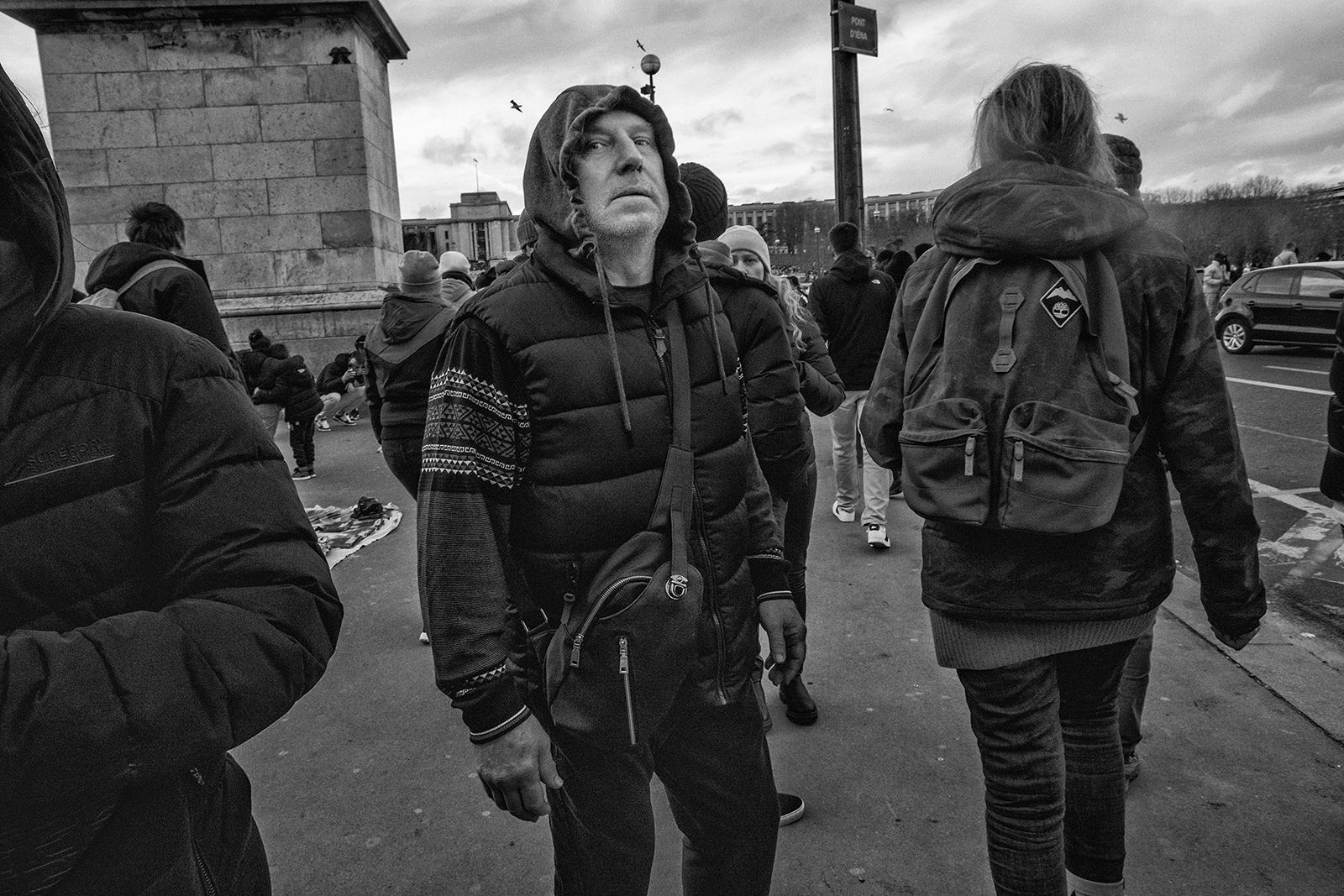
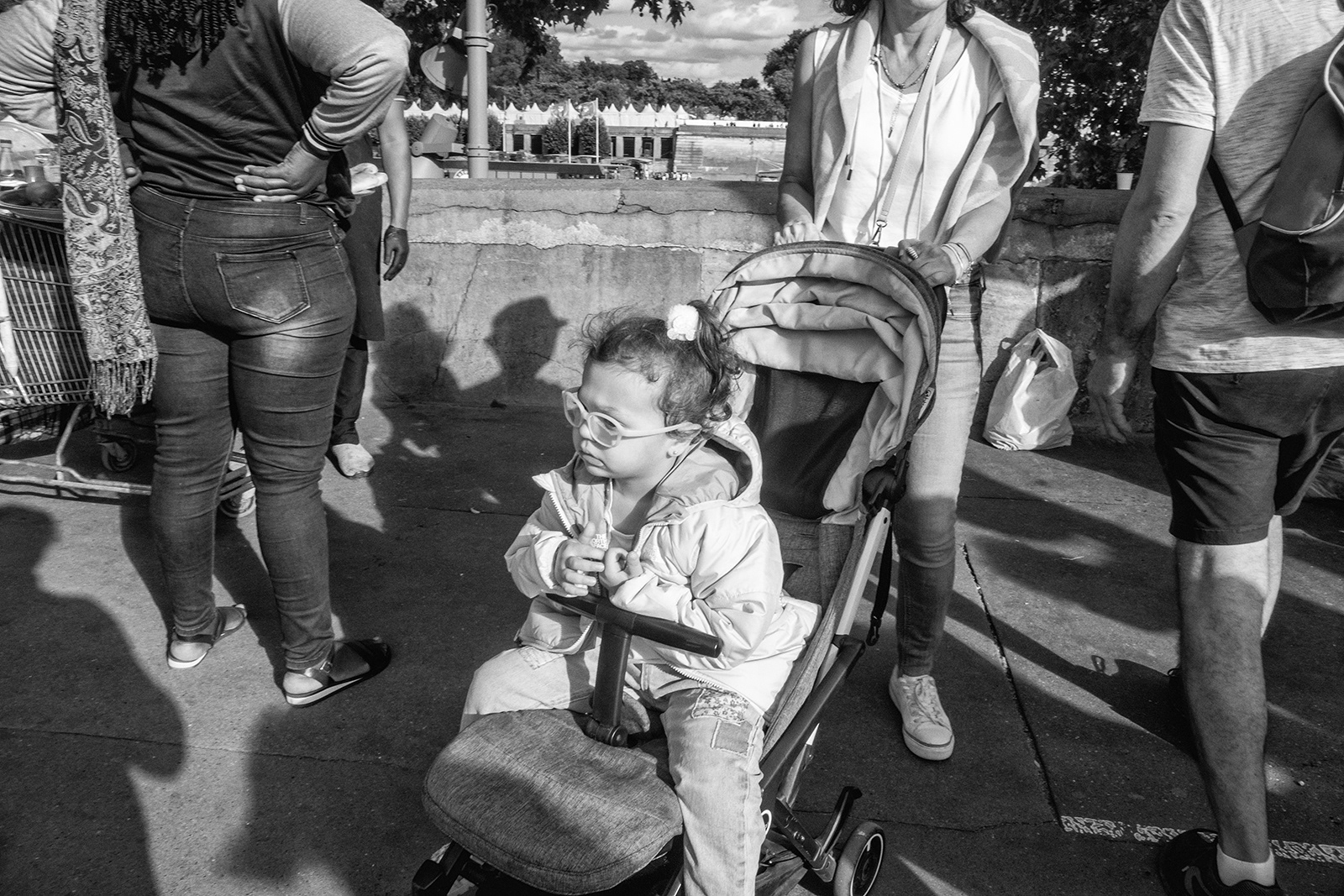
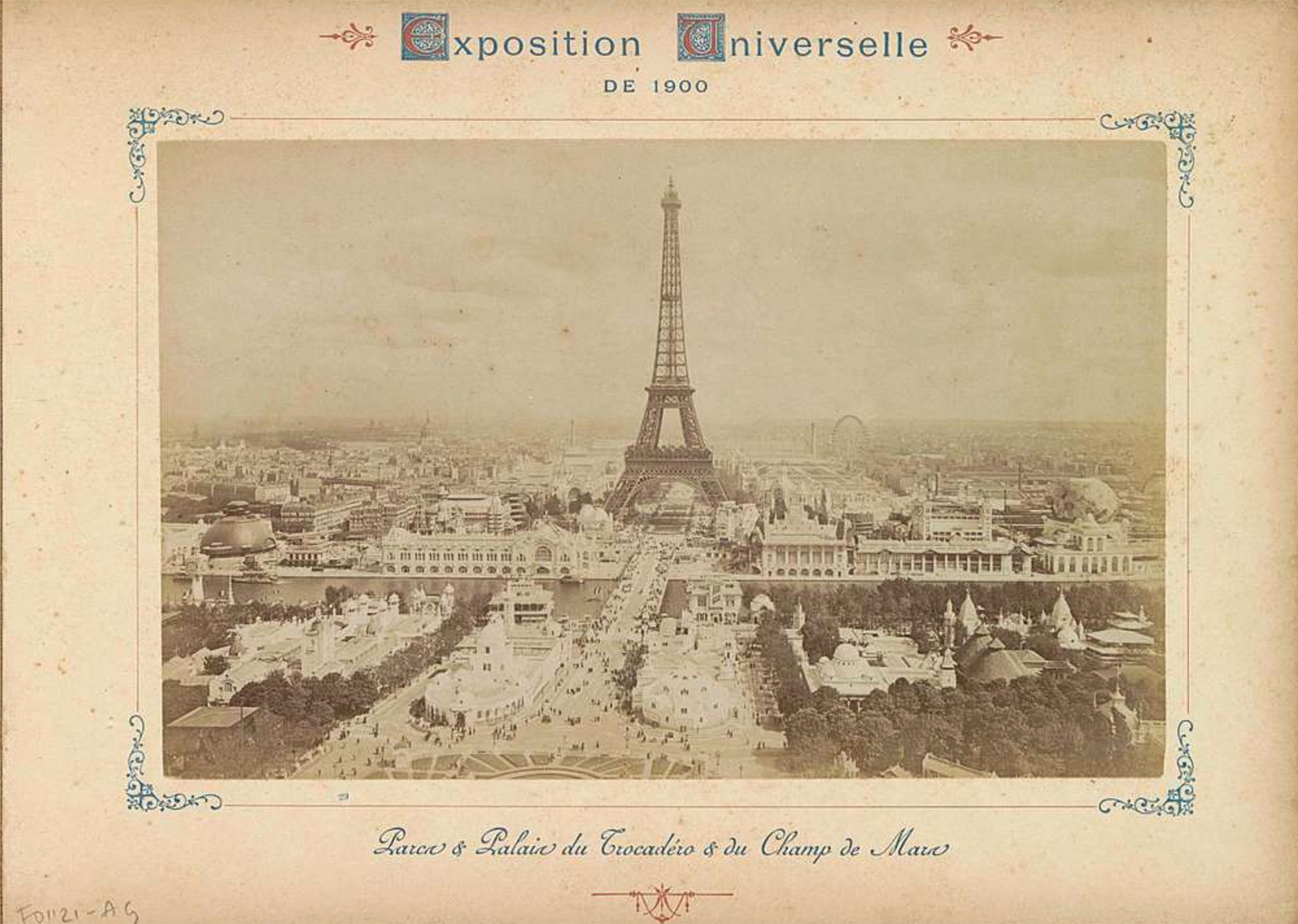
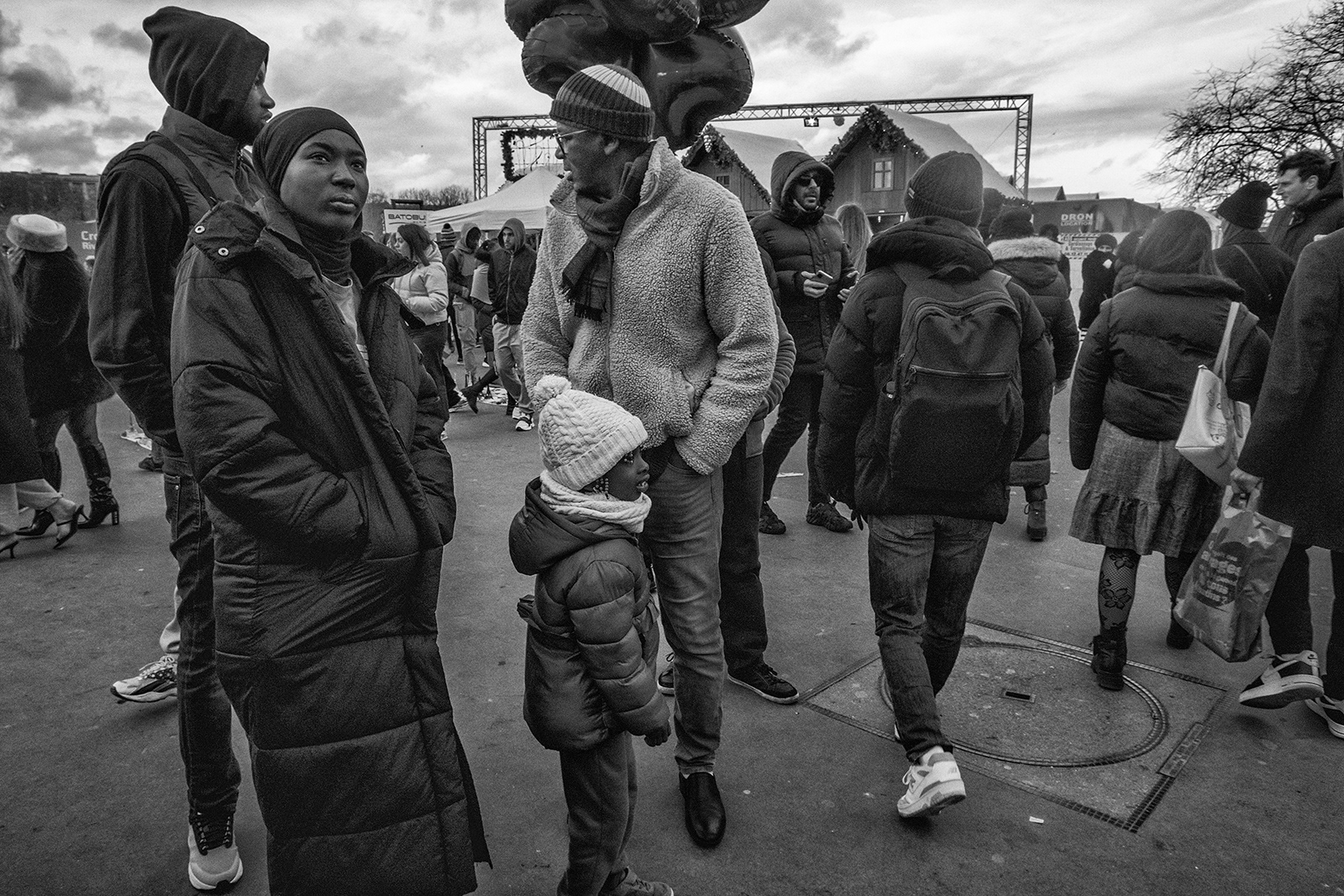
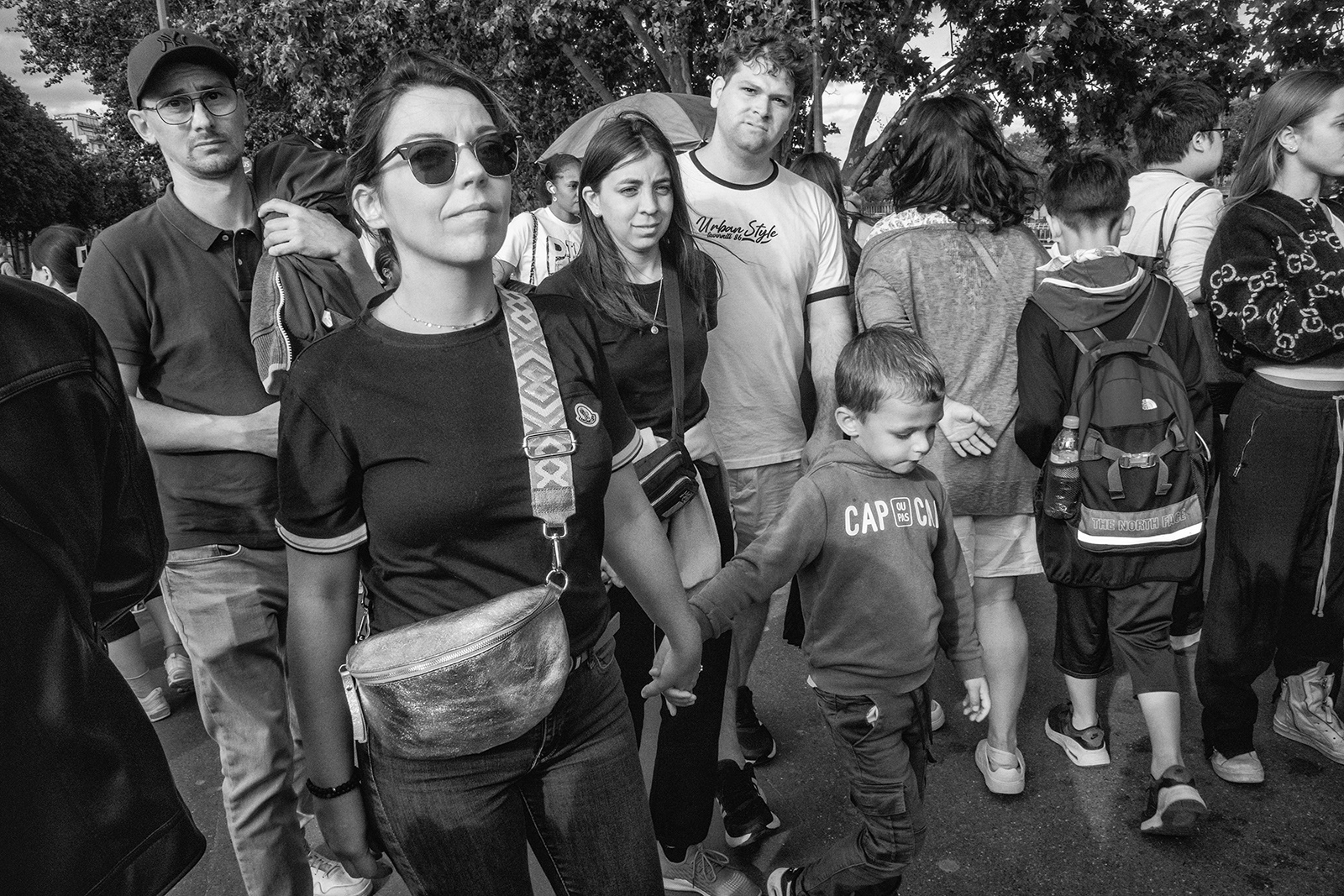
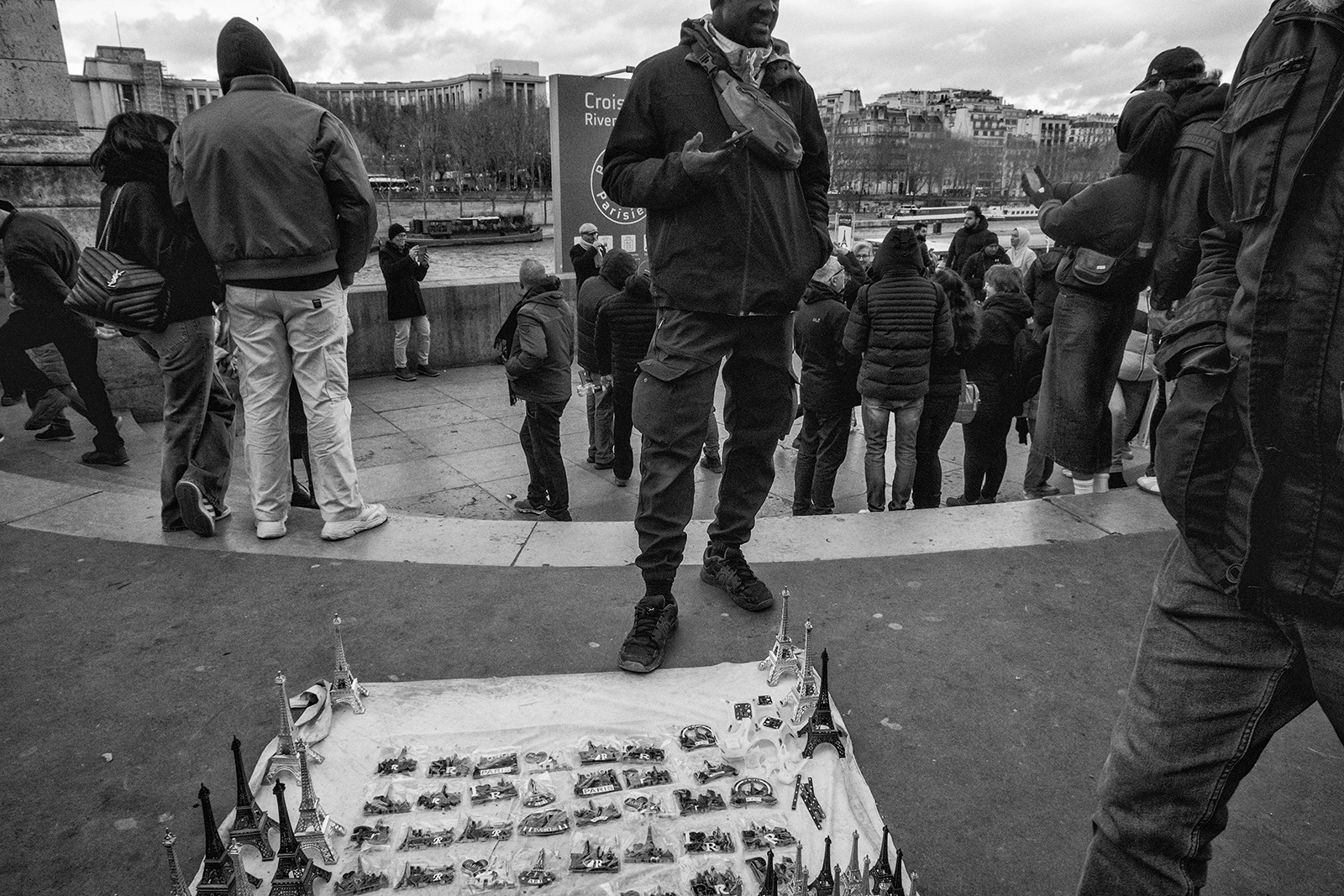
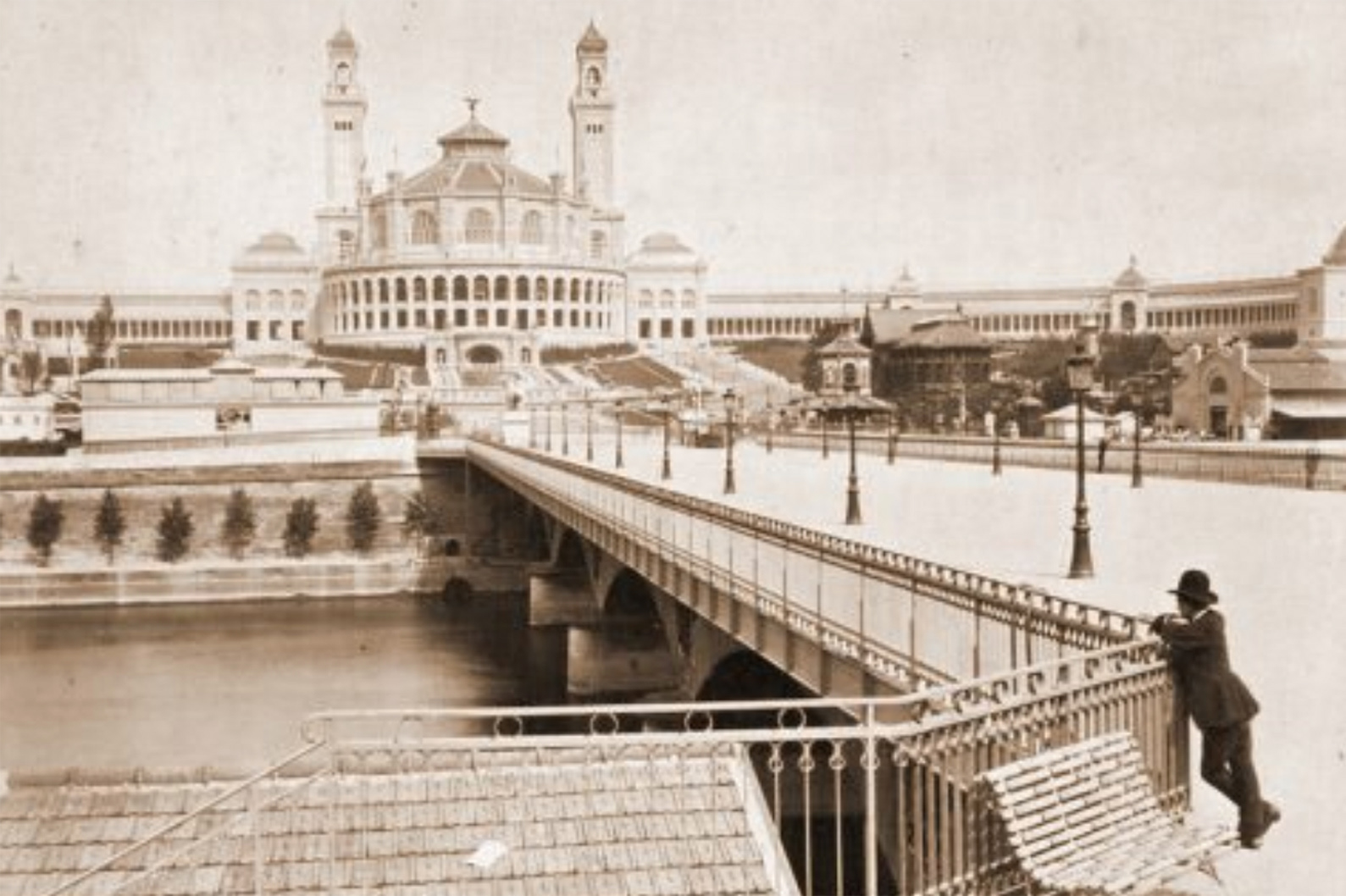
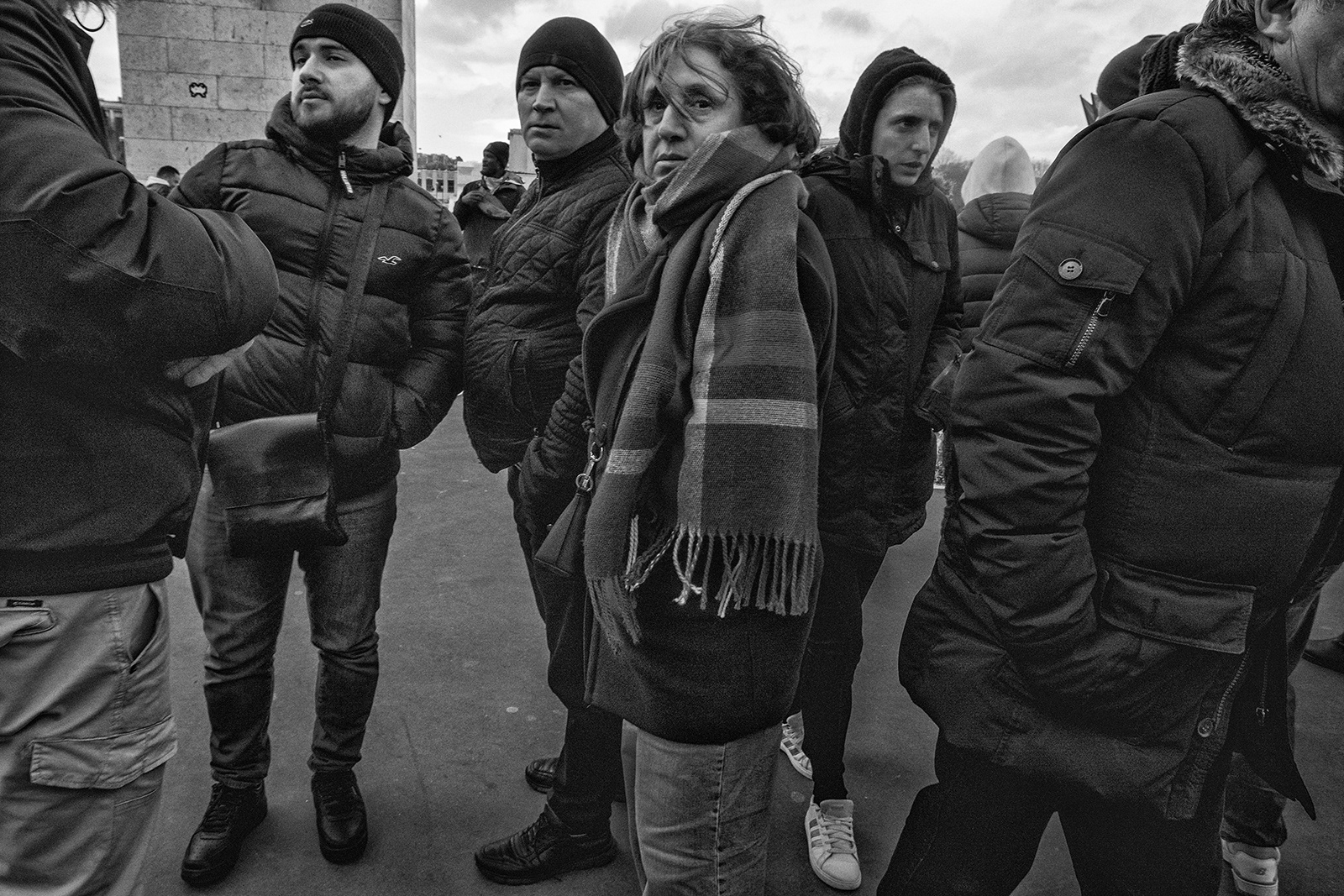
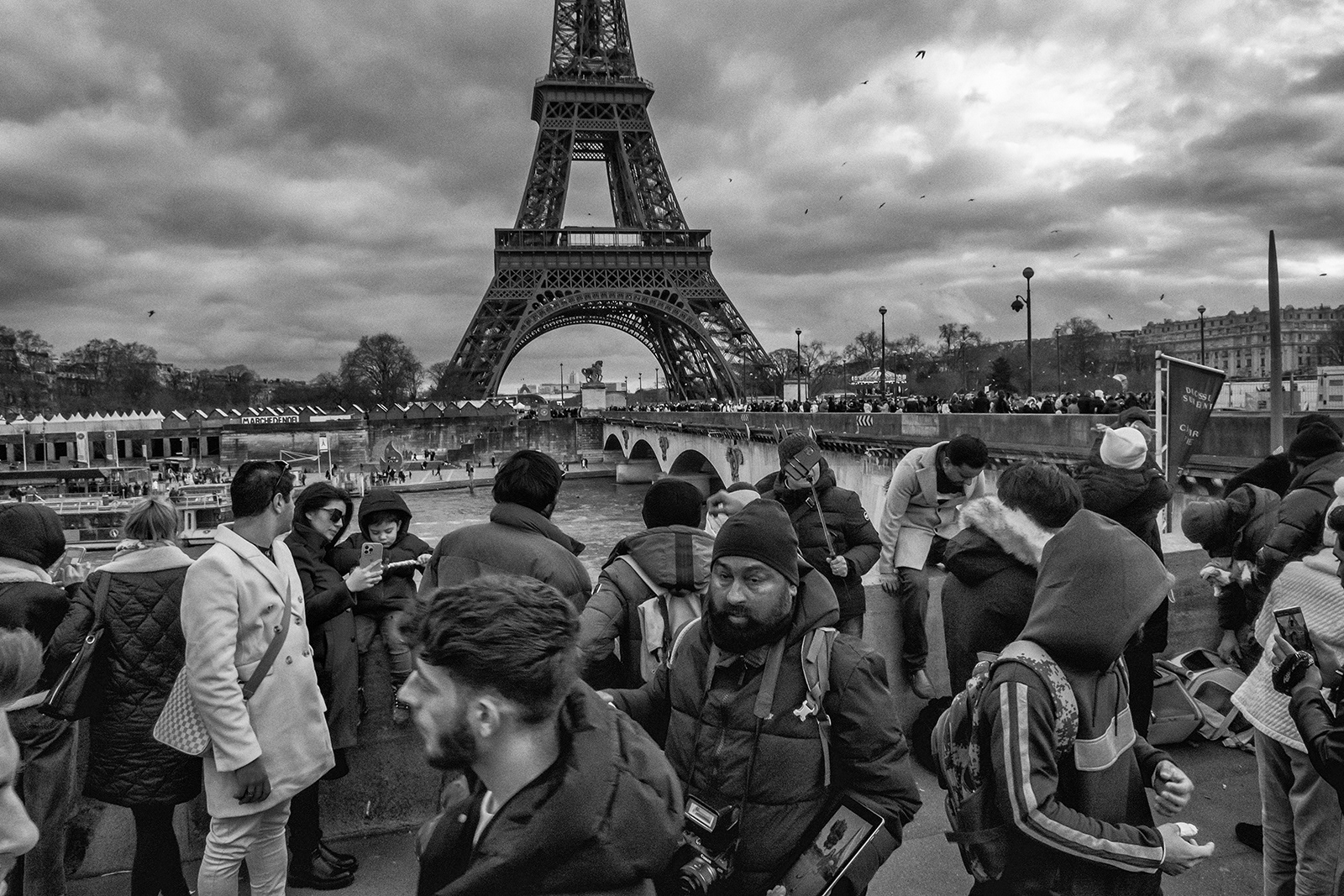
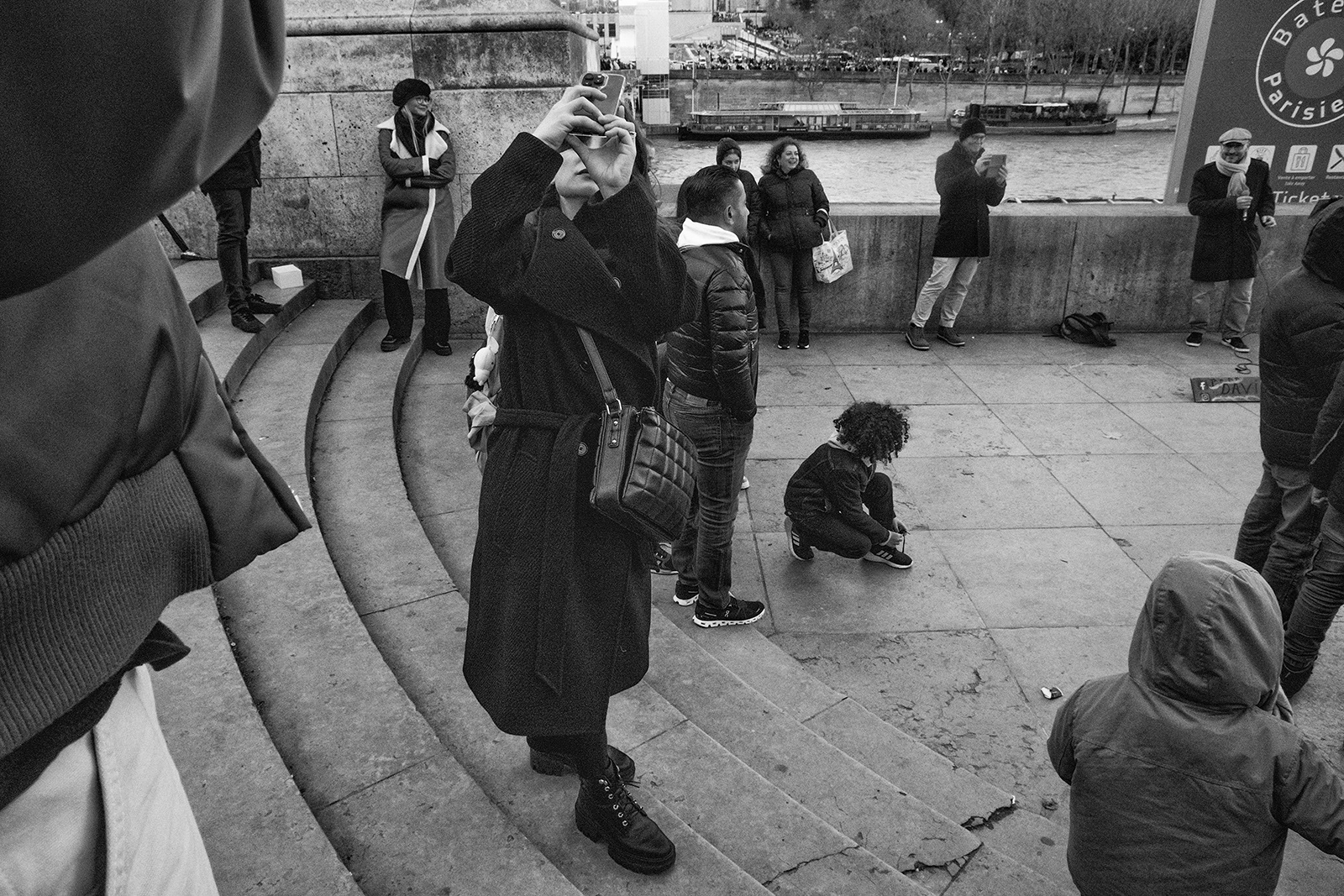
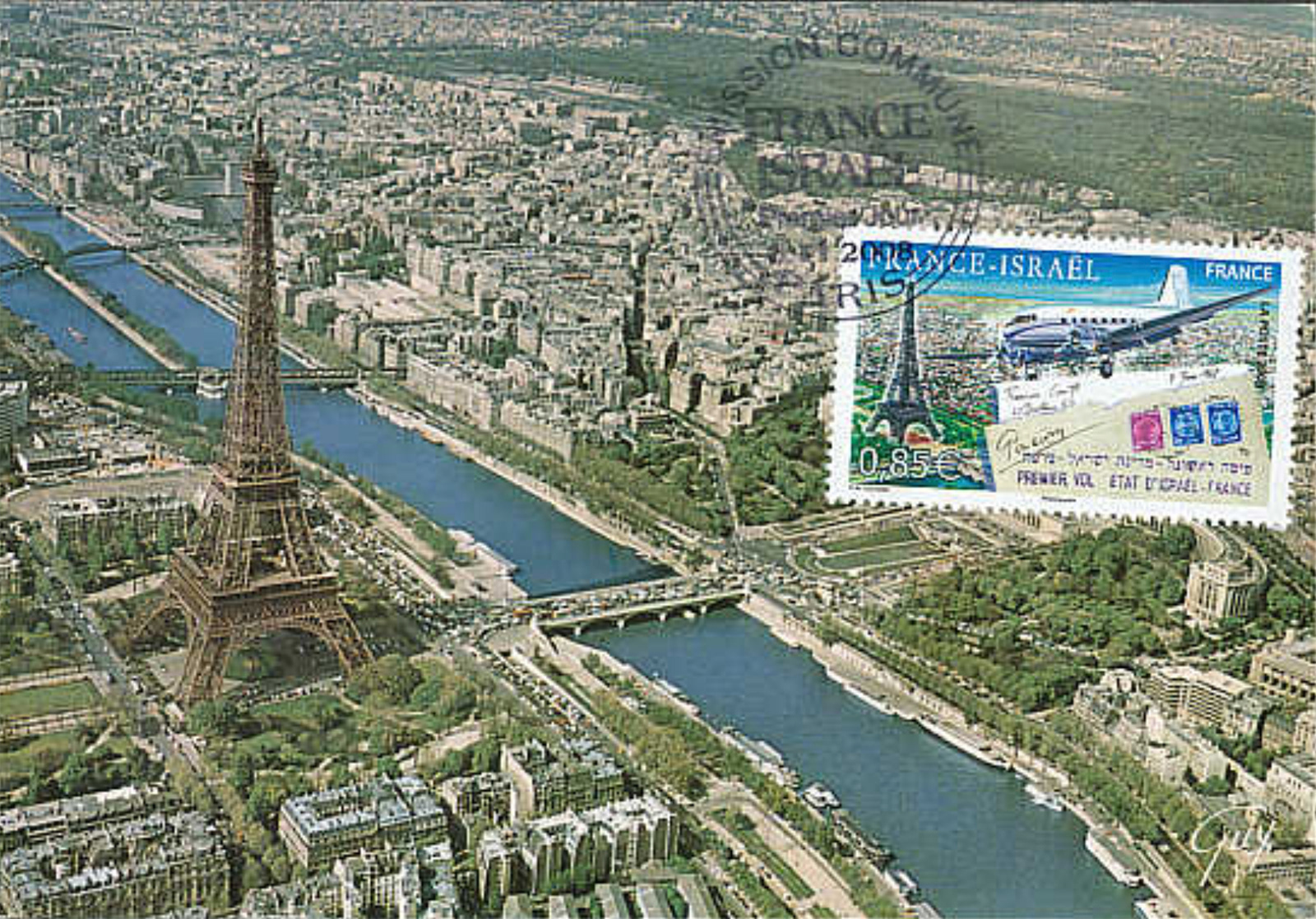
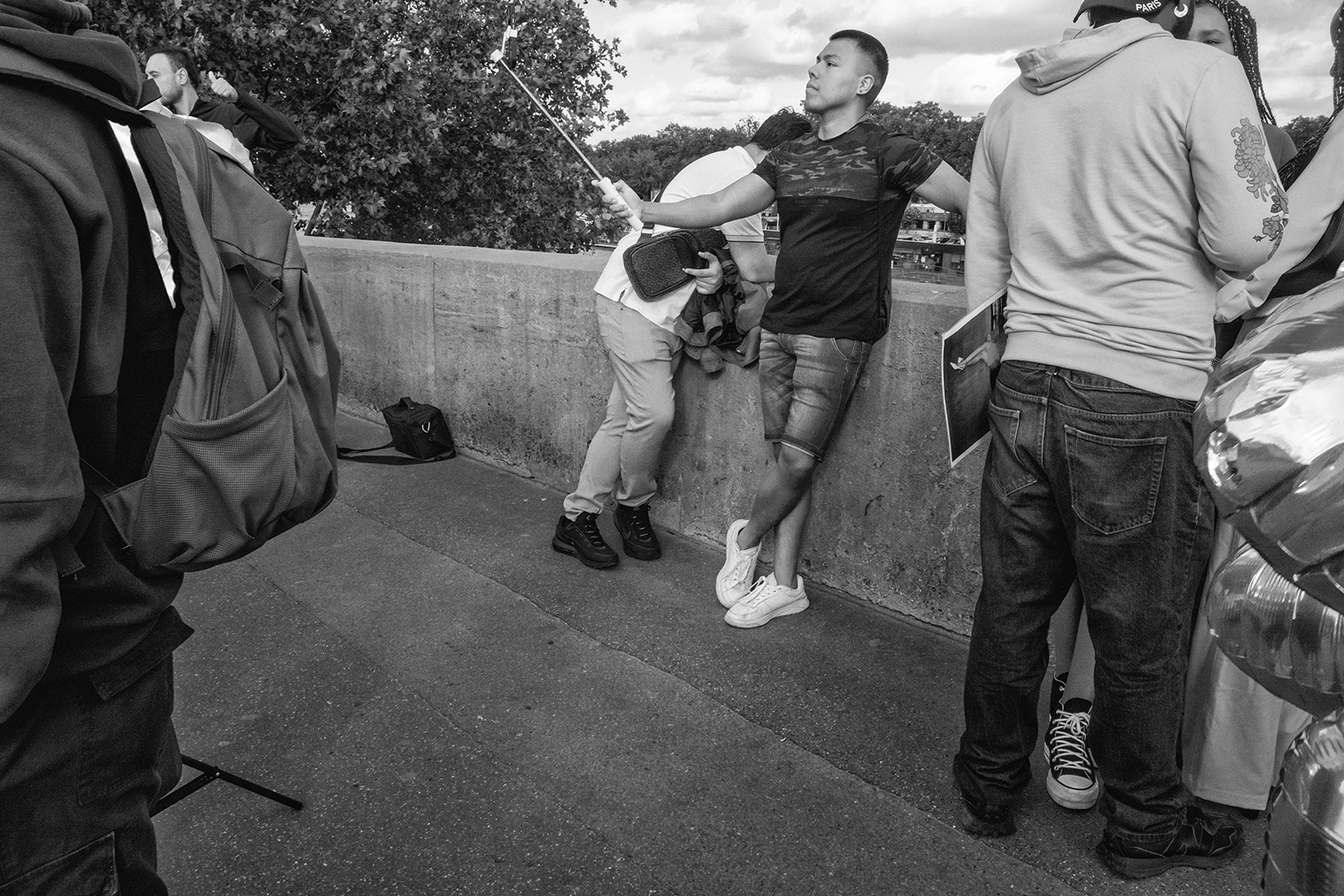
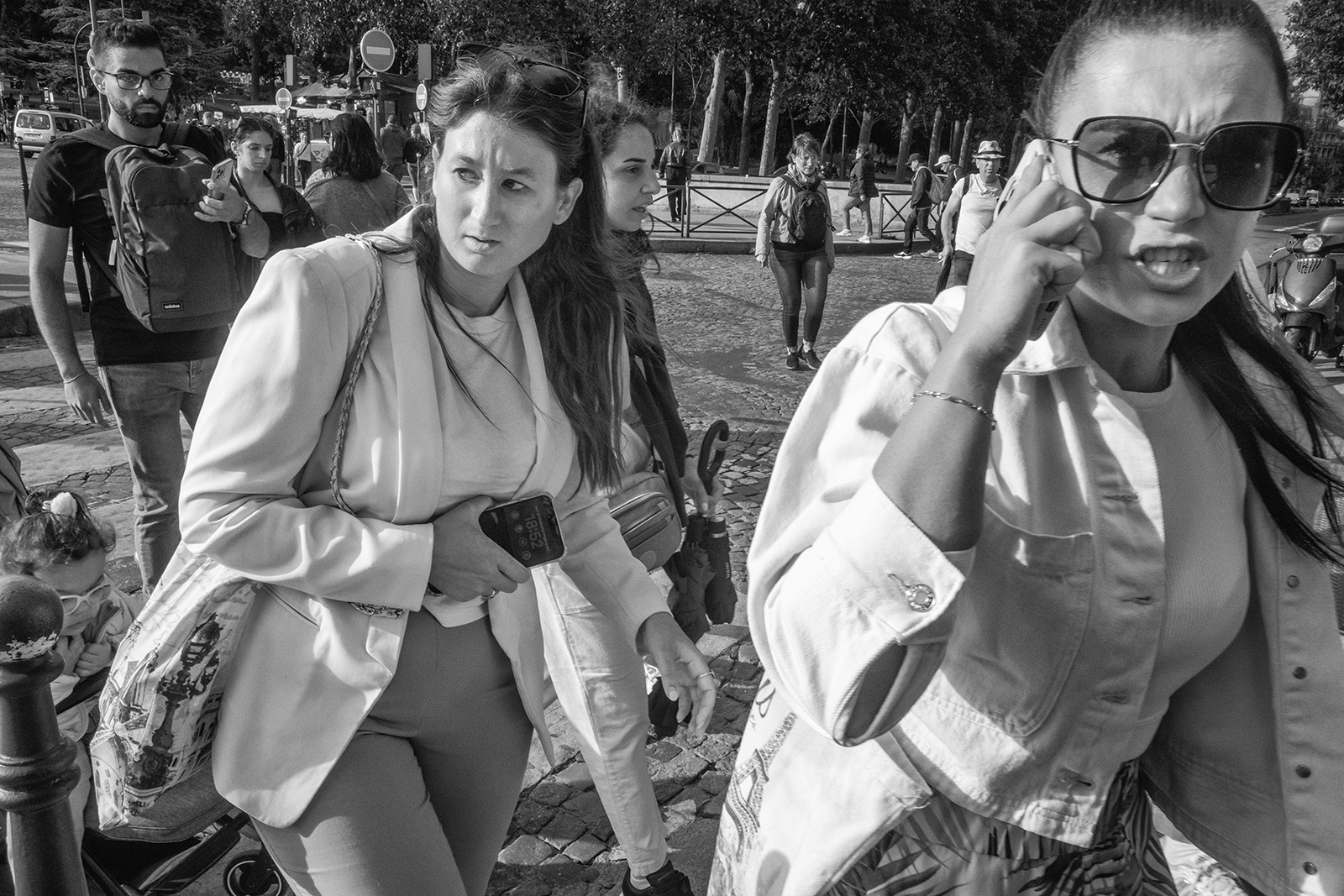
It seems only right to inflect my photographs made on (and at either end of) the Pont d'Iéna with images made in other eras of the site's urban life. The internet nests a range of postcards and vernacular photographs from the decades, some showing the old Trocadéro Palace where the Palais de Chaillot now stands, some showing the bridge under reconstruction in the 1930s, some from the time of the Universal Exposition in 1900. The oldest, and to me most beguiling image, is an 1866 oil painting by Berthe Morisot, from the time before the Eiffel Tower, and a vantage on the Seine before its full embankment. If Paris' subtle body is at least in part the spectral effluence of its photographs in time, including the snapshots and selfies that people make continuously on the Pont d'Iéna today—an effluence we can liken, perhaps, to the current moving below the bridge—it is Morisot's vision of the Pont d'Iéna that seems the bridge's own self-dreaming and its future idyll. Walking the bridge and lingering it, in summer and in winter, I ask in the way I can, by way of photographs: is there a more vivid crossing of Paris' peoples—its residents and visitors, locals and migrants? And in that vividness, is there a better fathom of how the city flows through its peoples, and how they tacitly consent to be thought by the city? Is there a better place to study how the city agrees to surrender its grandest self-proclamations to its own infra-ordinary? And where, if we finally reach the crux of the infra-ordinary, does memory shelter? And where in the place that memory shelters does imagination cast its prospects?
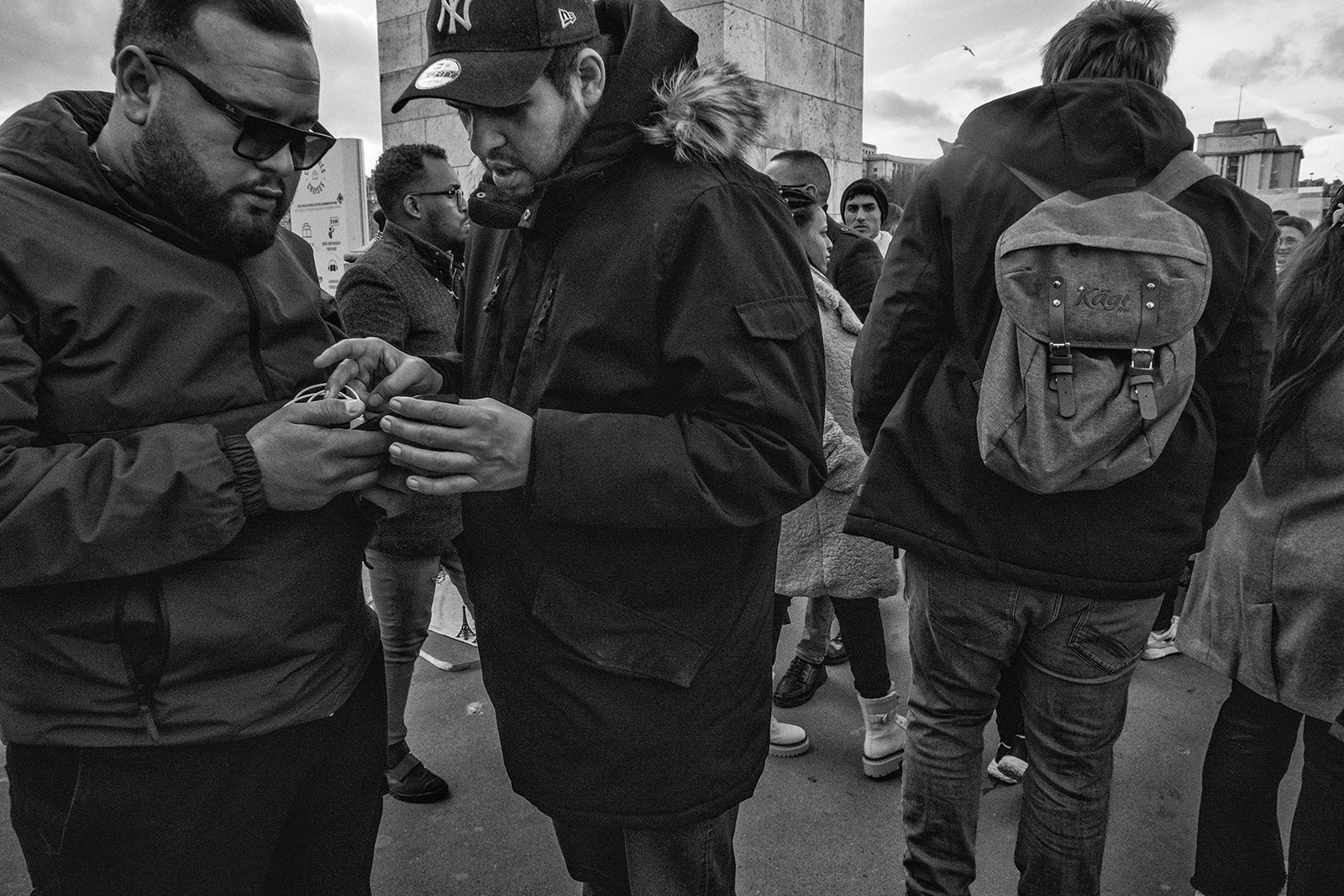
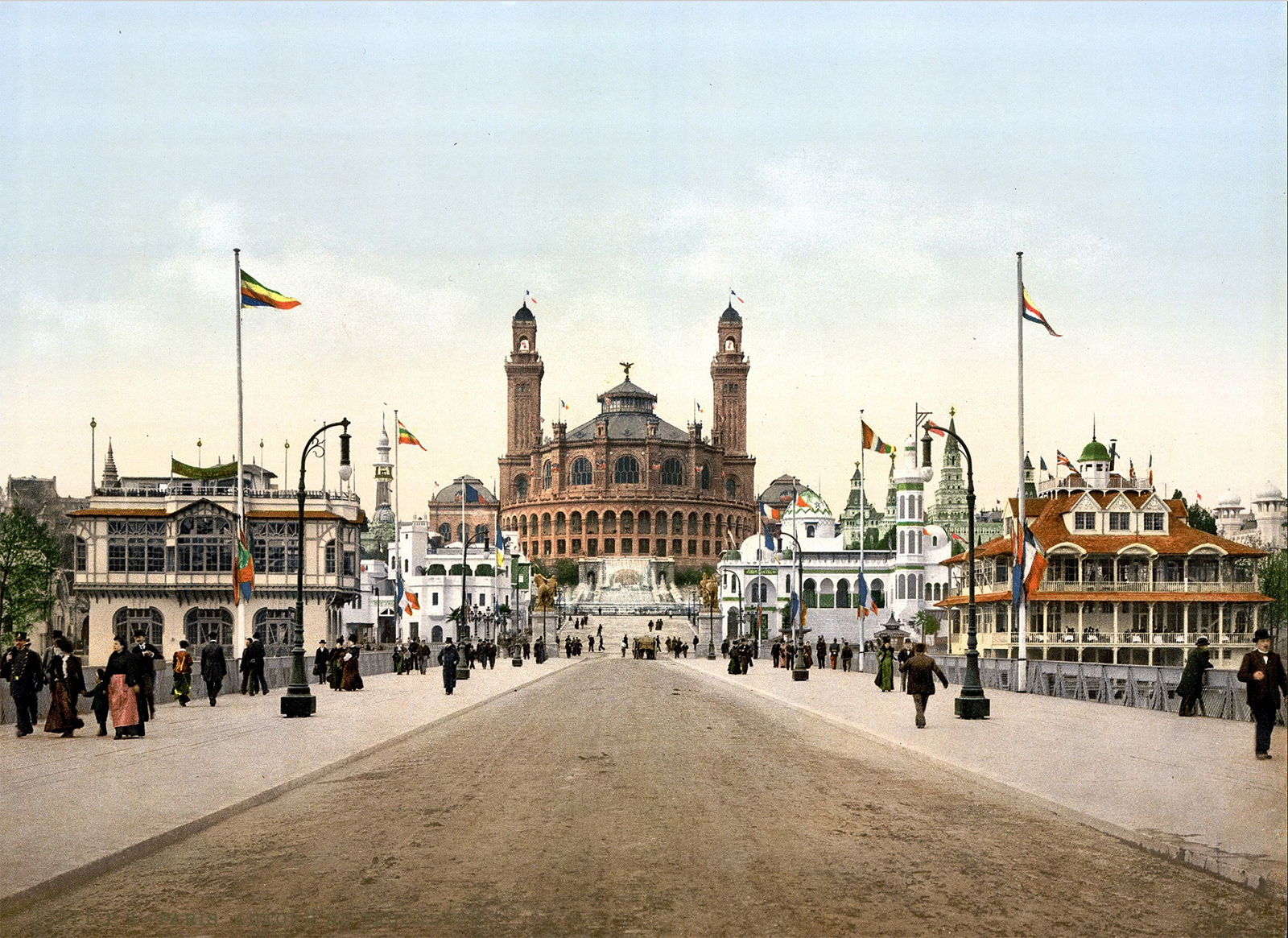
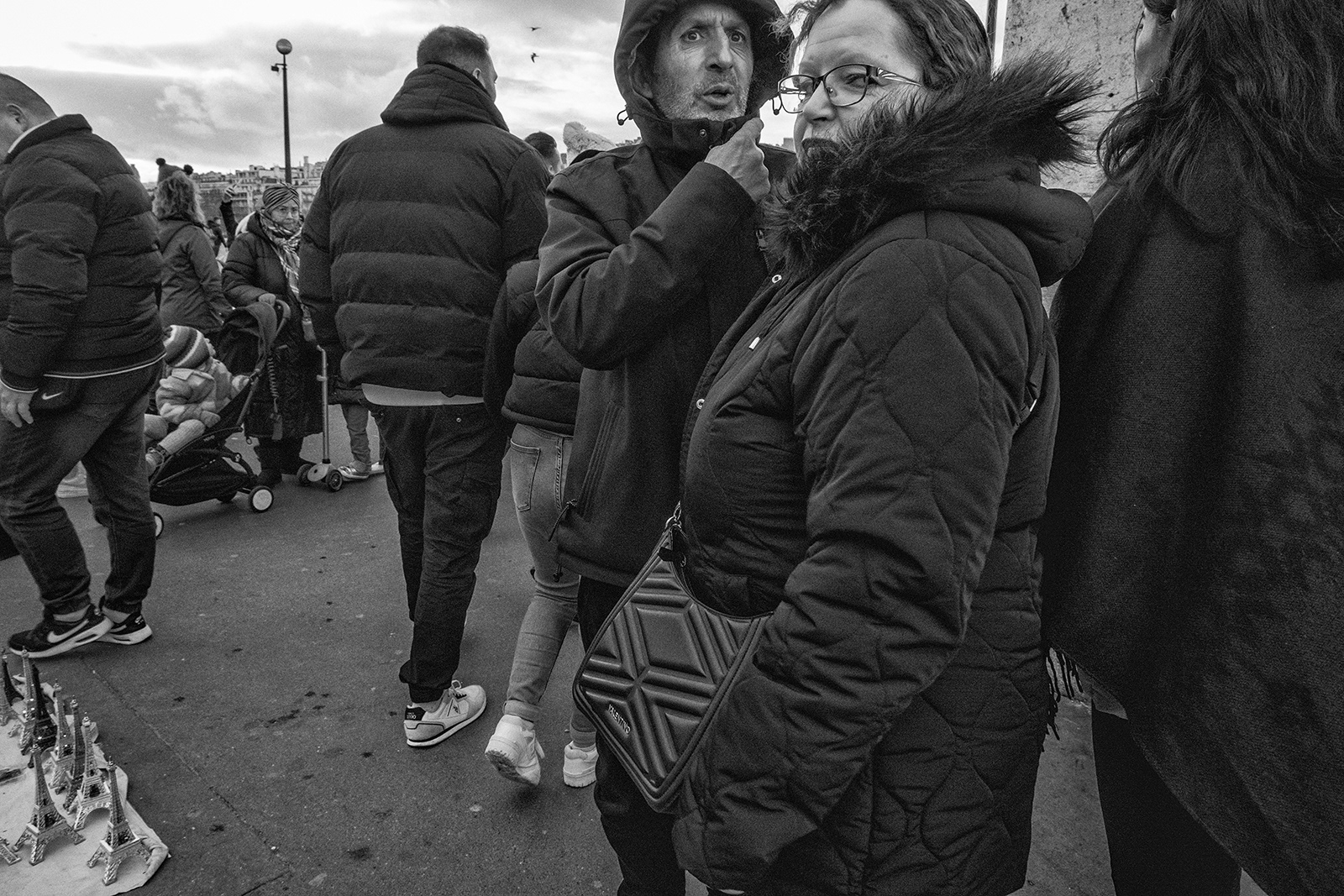
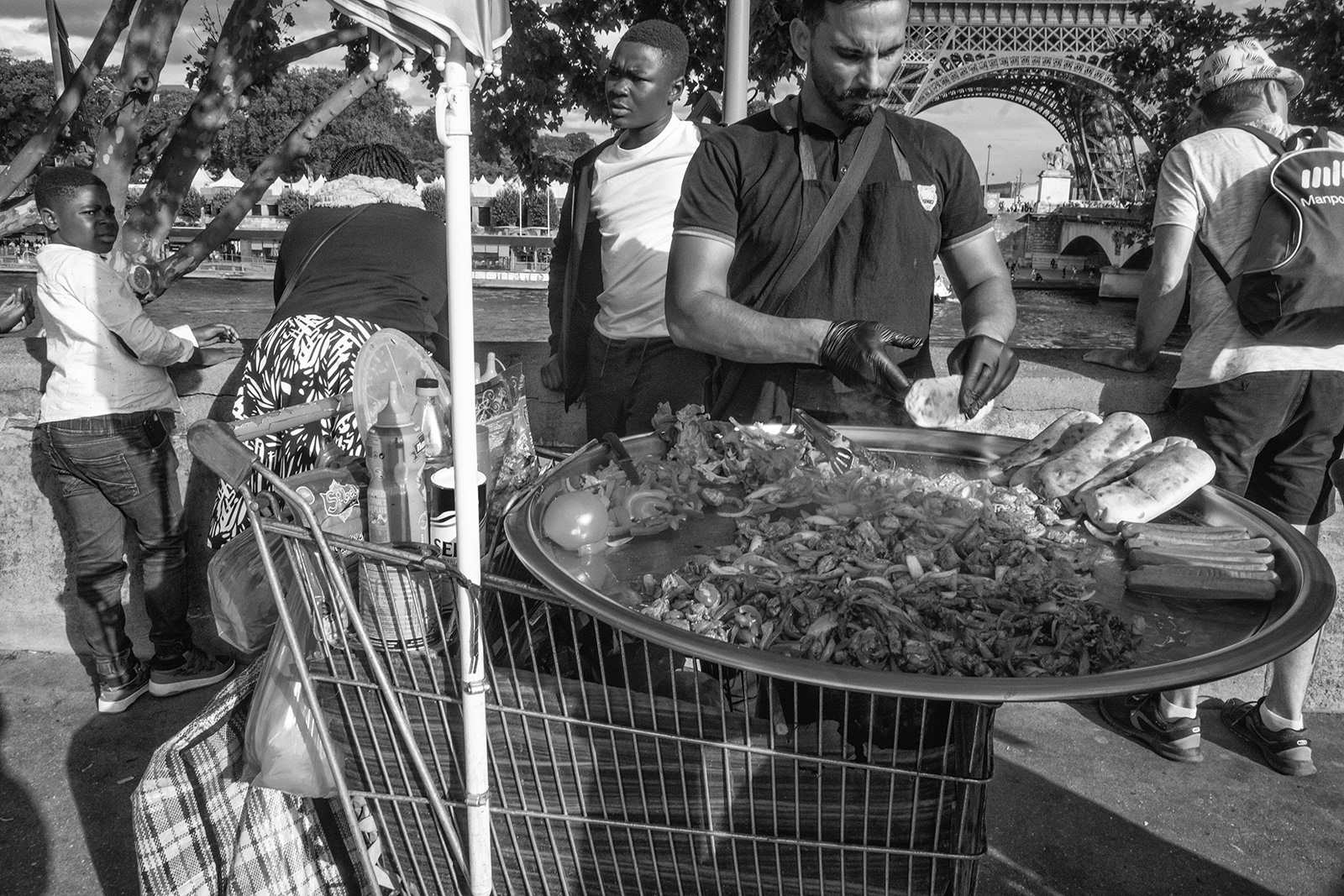
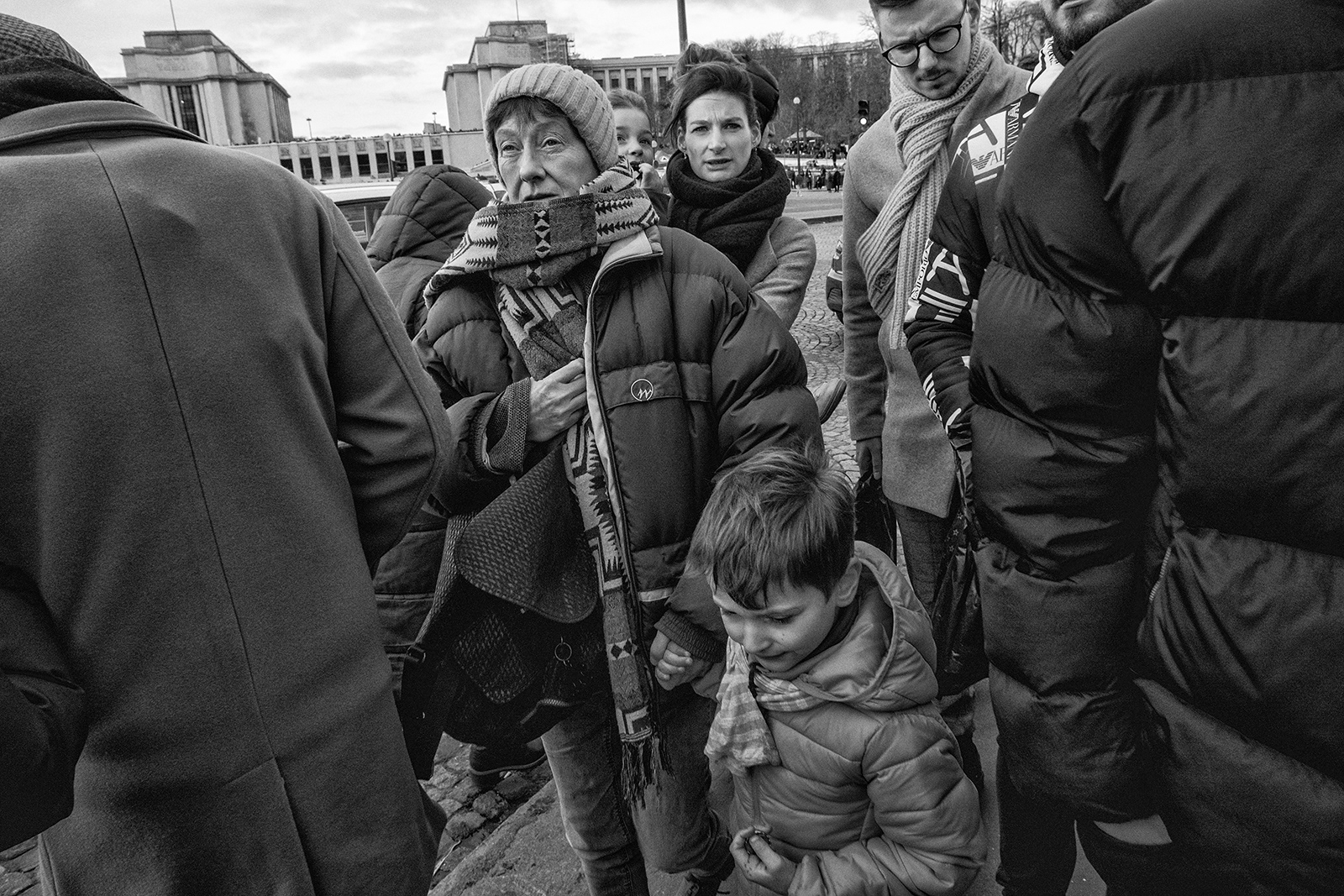
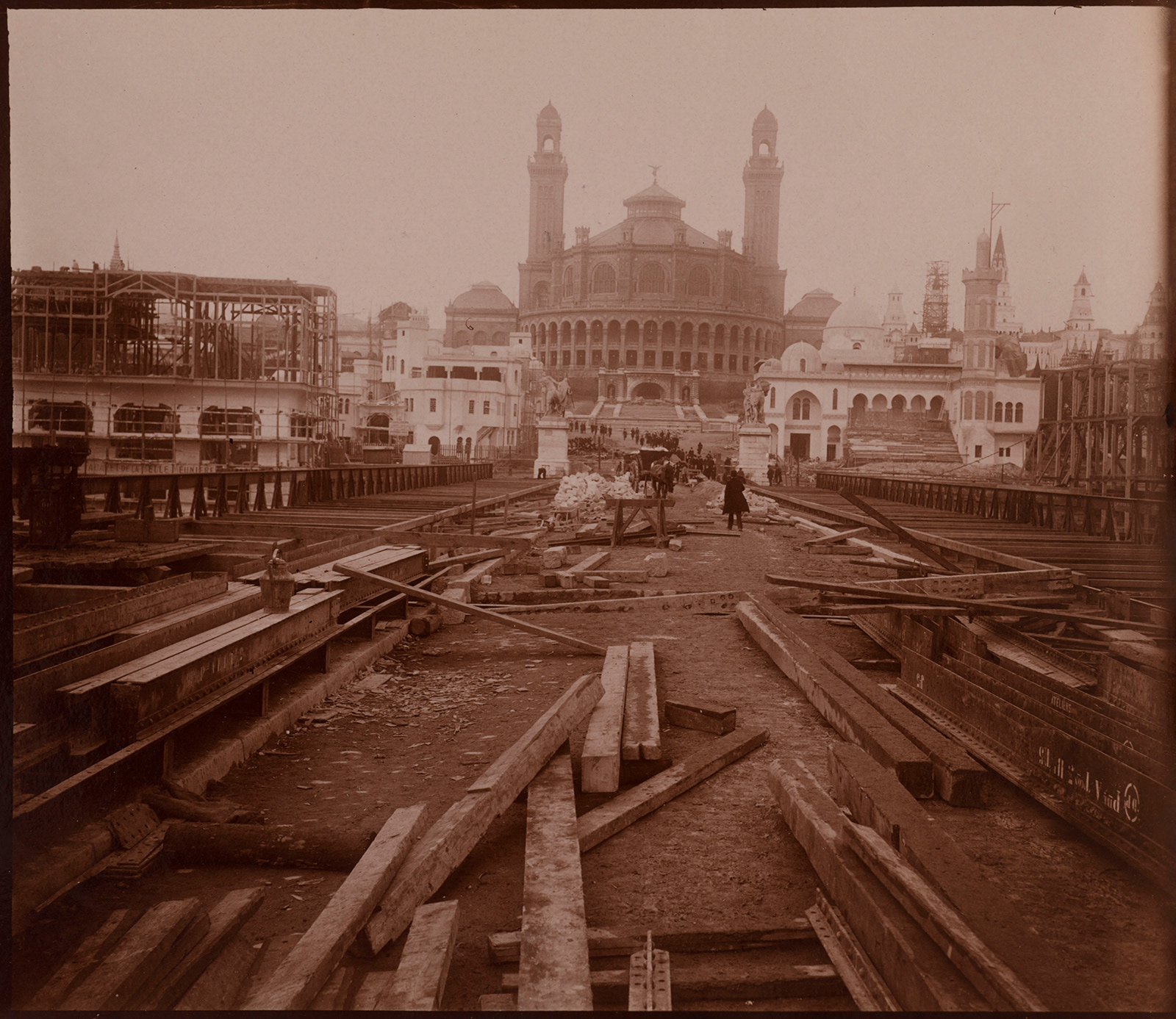
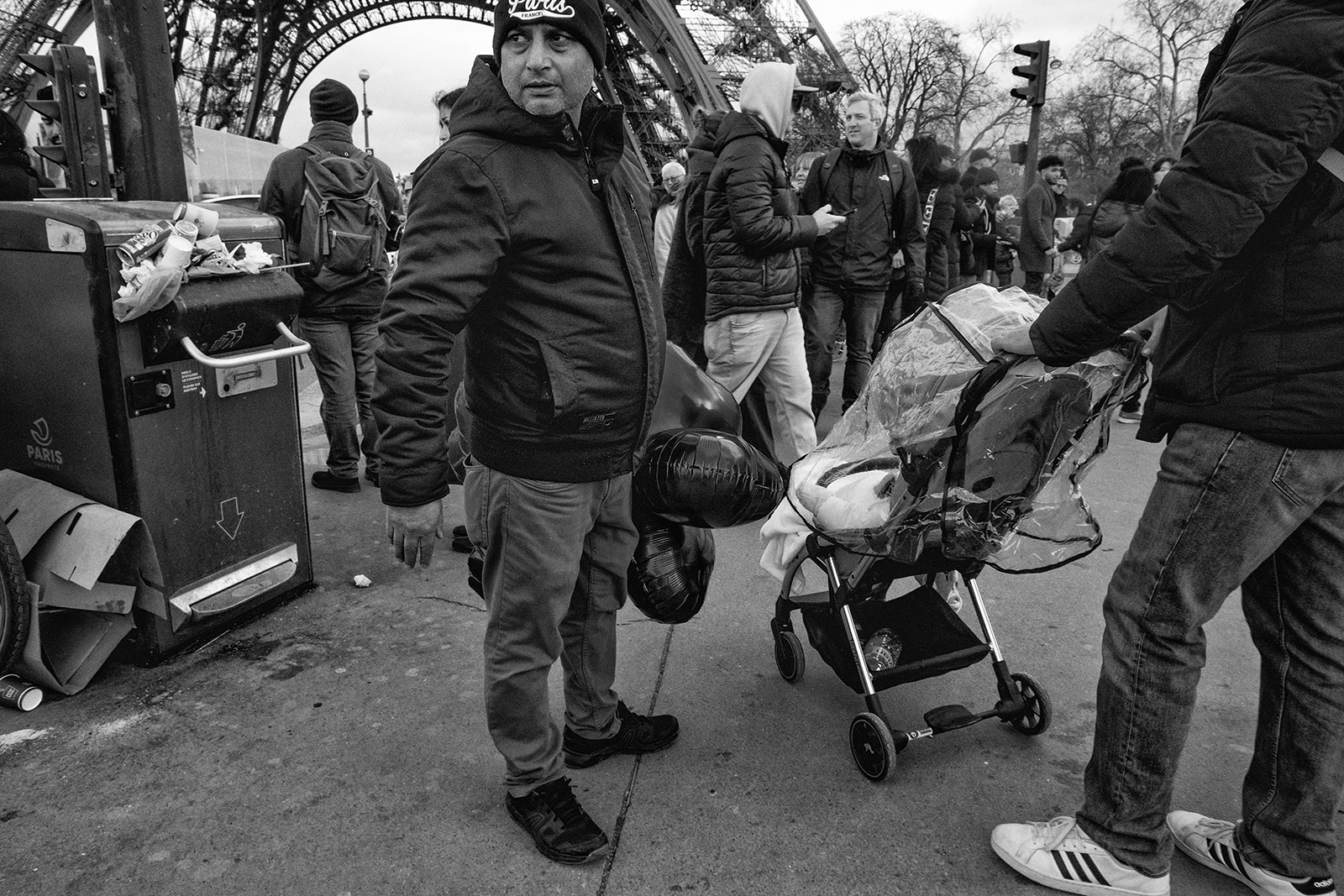
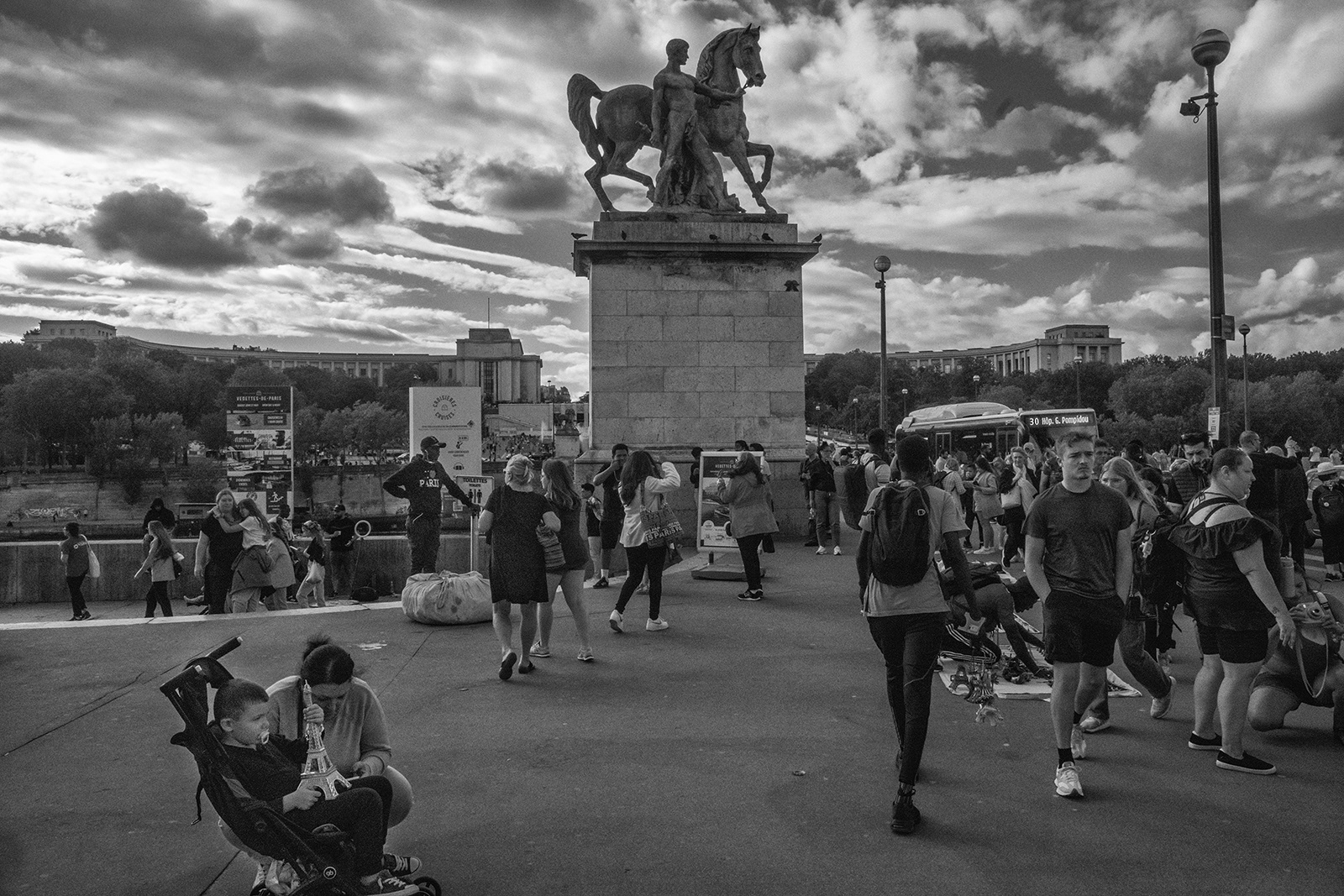
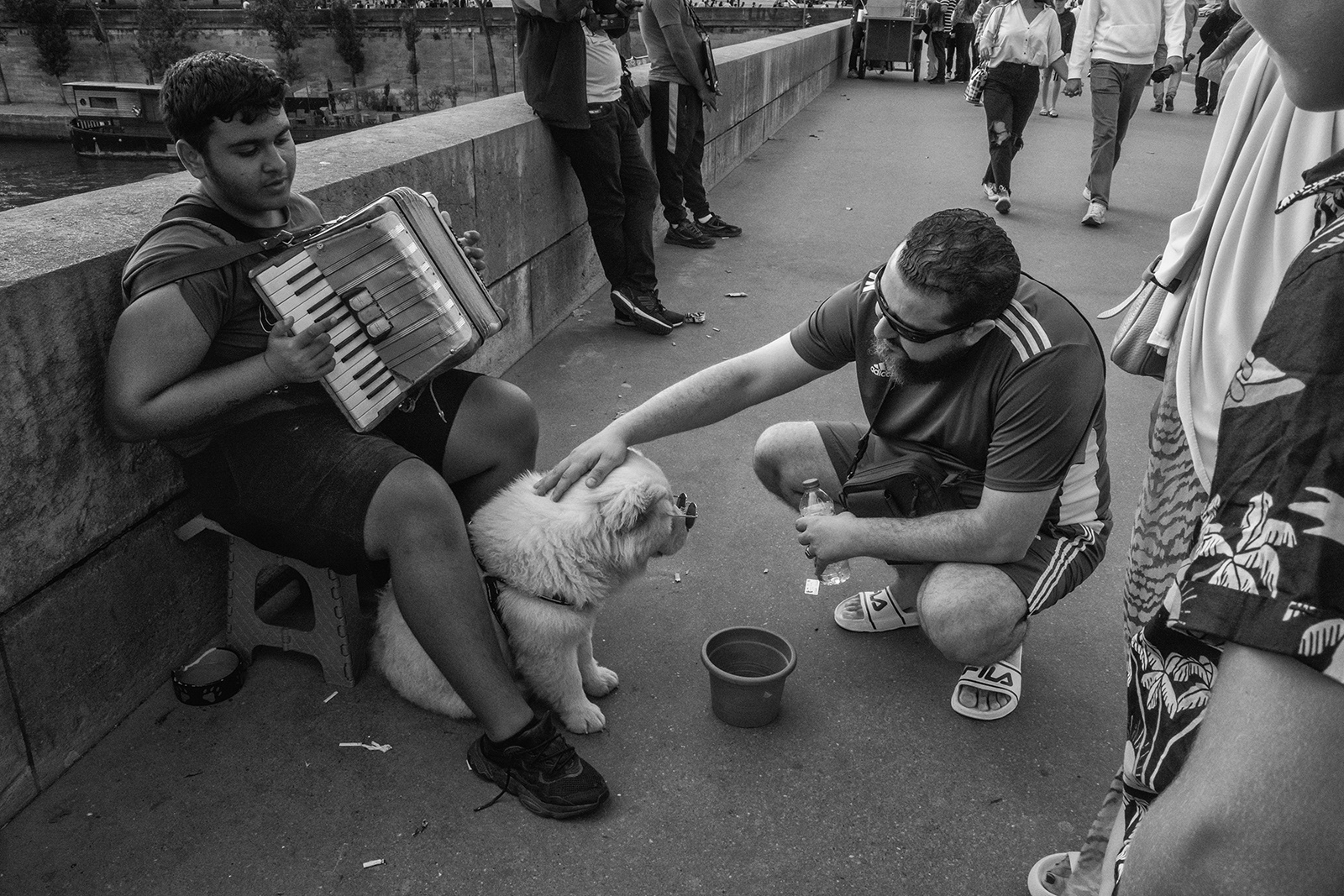
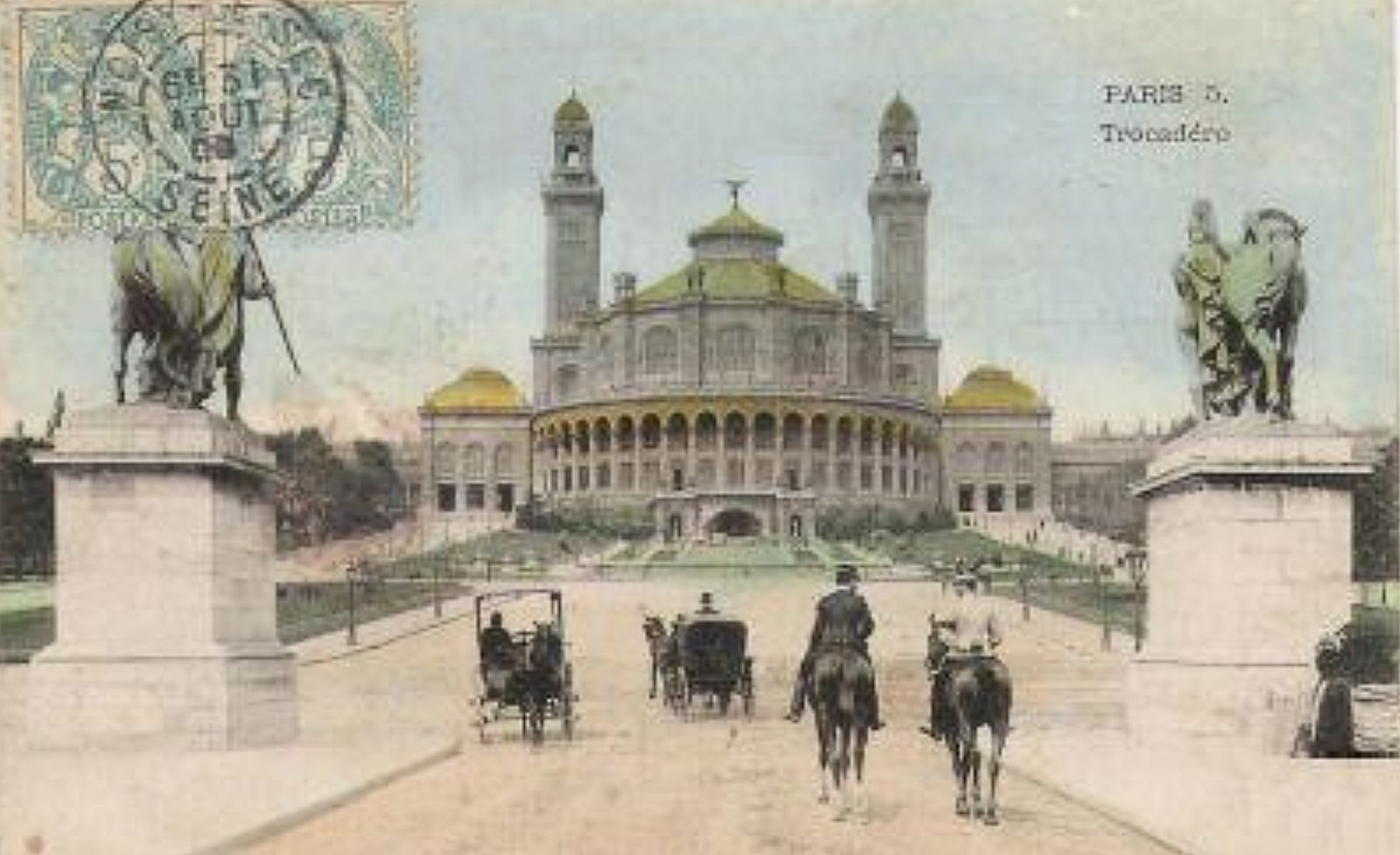
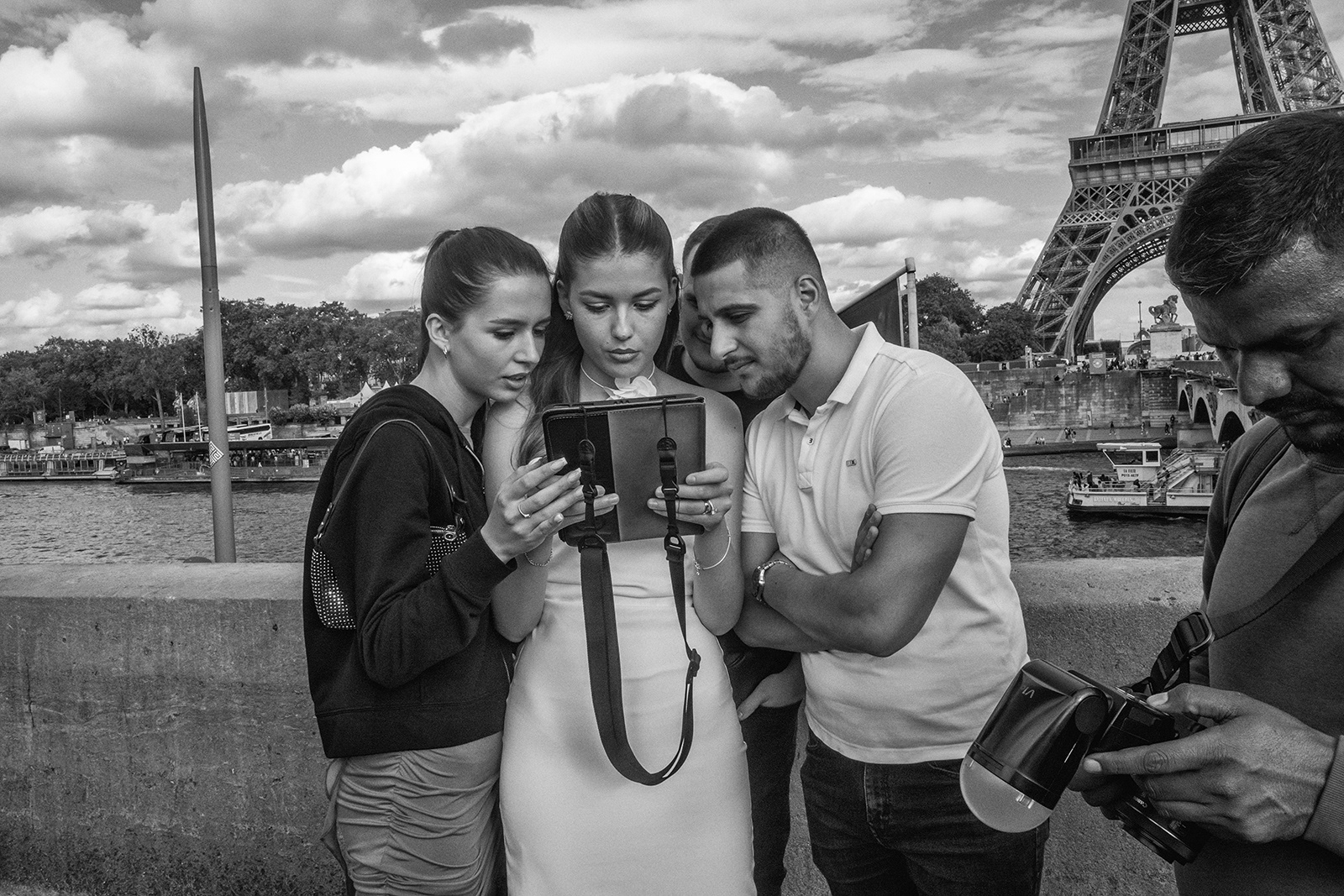
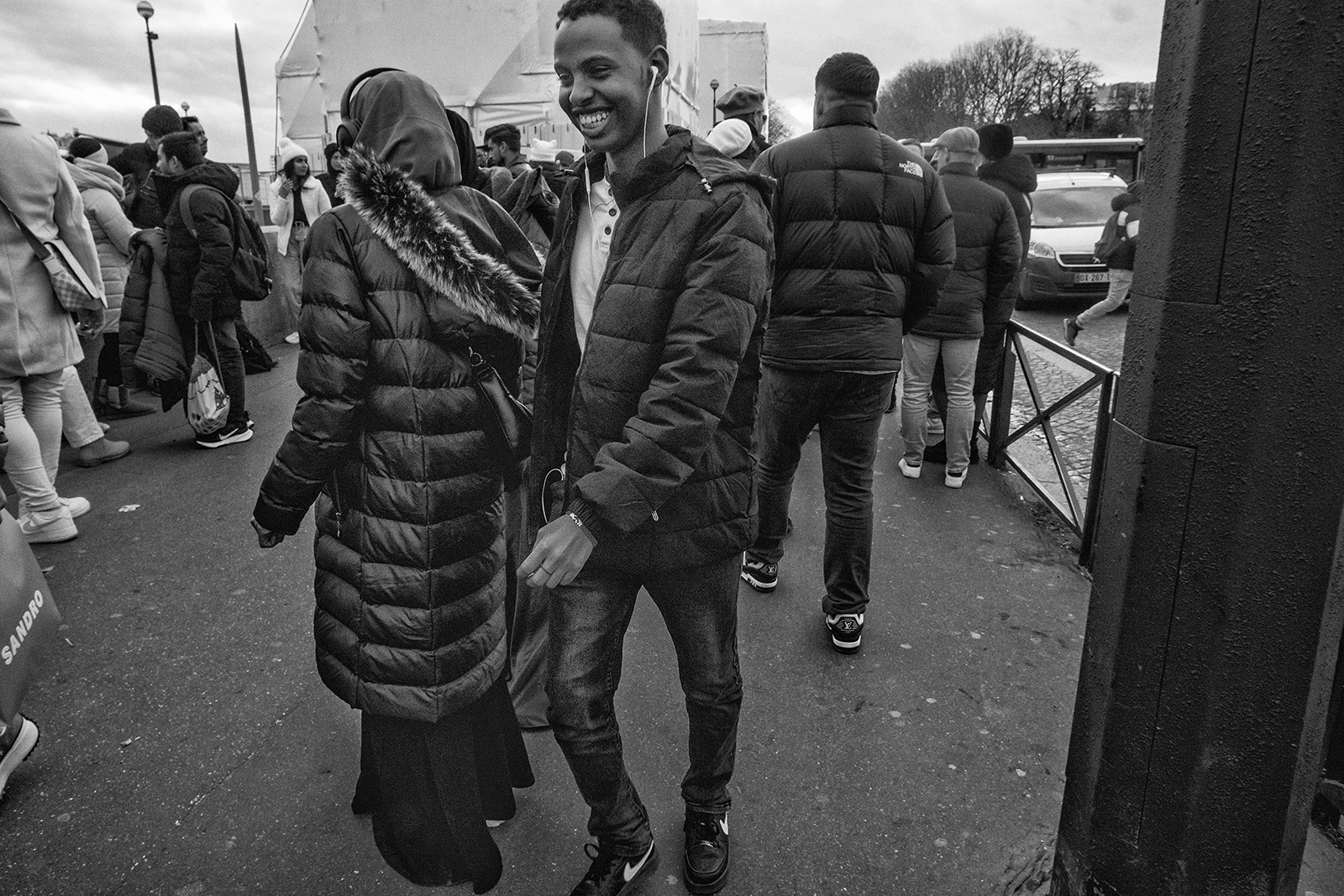
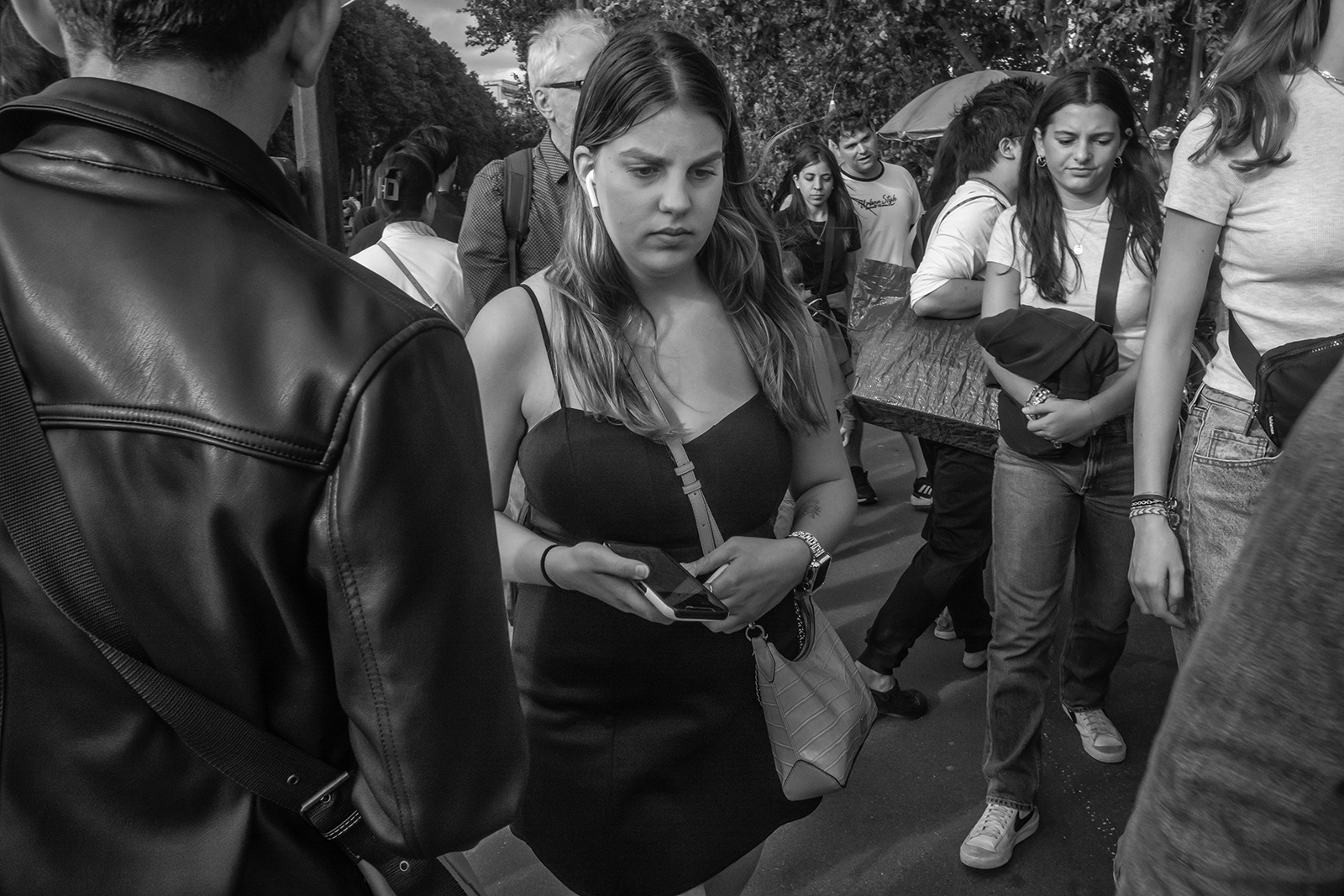
Paris, 2024